IBIS stands for in-body image stabilization. It ensures that your images are sharp when using slow shutter speeds and provides stable videos.
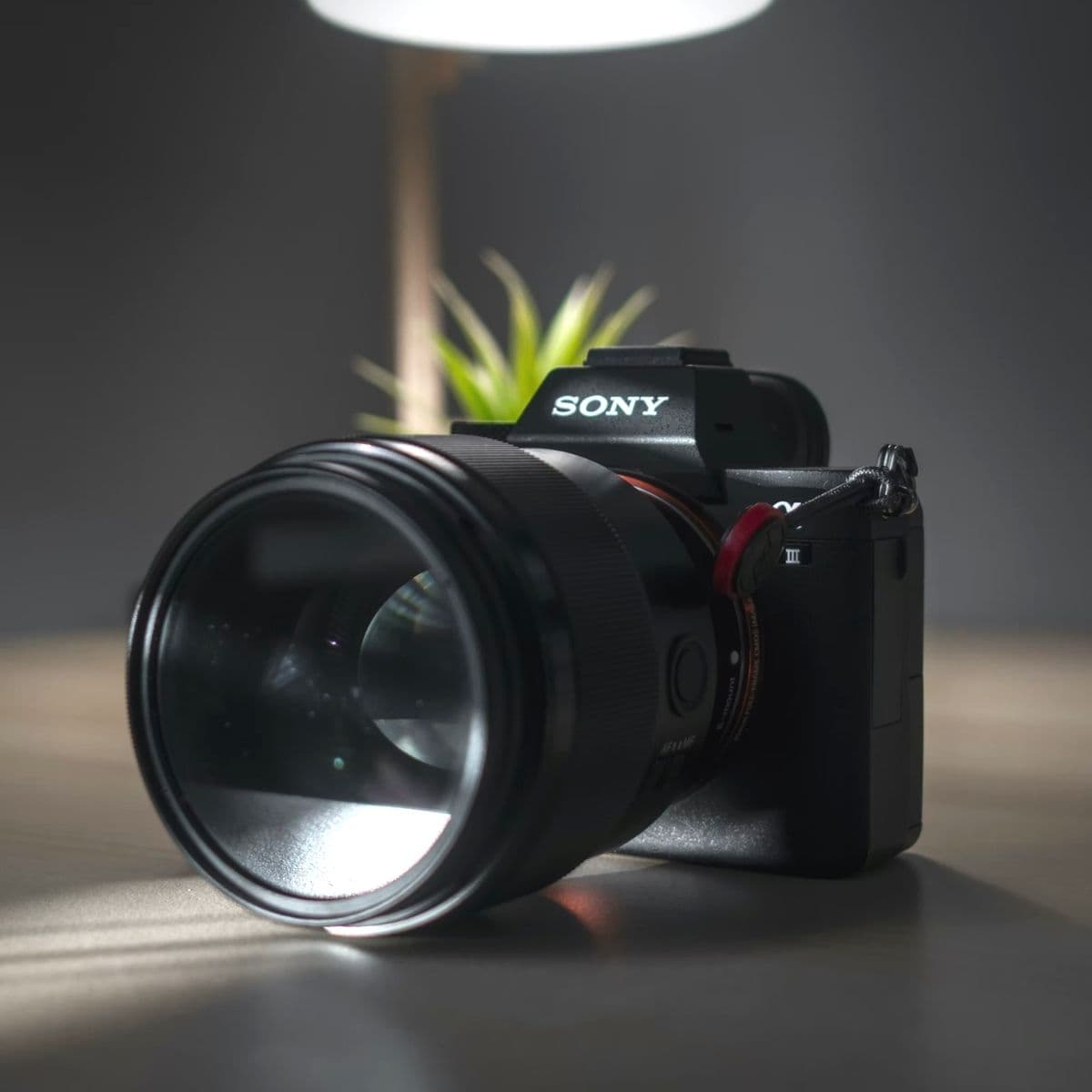
In-body image stabilization is an incredible feature because it allows you to use slower shutter speeds without a blurry result.
Before IBIS, you’d rely on in-lens stabilization. Now, in-body stabilization opens the door for you to use any lens.
Related: Which camera has the fastest shutter speed?
Moving forward, you’ll have stabilization, so you won’t have to rely on finding a lens with it.
With an innovative and beneficial feature also comes a higher price tag. So, expect to spend more on a camera with IBIS.
Related: How to become a successful freelance photographer
Another factor to consider is the use of long focal lengths. If you’re using a super-telephoto lens, IBIS can only help to an extent. Stabilization with long lenses is still required.
Related: 35mm vs. 50mm: Which prime lens is better?
Remember, IBIS only reduces blur from camera shake. If there’s a movement within the frame, it’ll be blurry when using slow shutter speeds.
Overall, IBIS is an excellent feature. The following are the cameras with IBIS from different brands.
Canon cameras with IBIS
Canon offers in-body image stabilization with its R-series mirrorless lineup. As Canon expands the R-series cameras, expect to see more options with IBIS.
Related: 12 best Canon lenses for wedding photography
The following are the current Canon cameras with IBIS.
Canon EOS R3
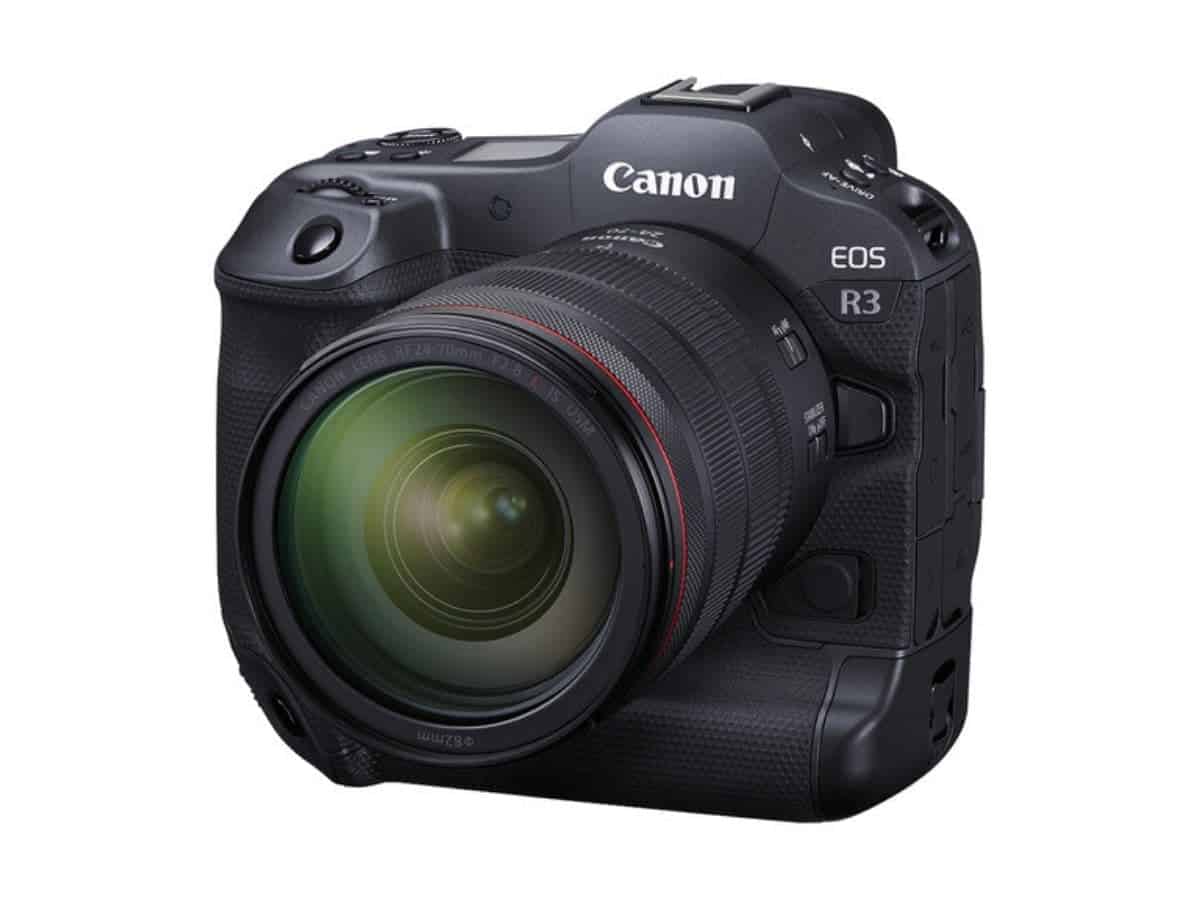
Canon’s EOS R3 is a full-frame mirrorless camera with a 5-axis sensor-shift stabilization system.
It does an excellent job at reducing camera shake in videos and images using slow shutter speeds.
The R3 also features a 24.1 MP image sensor and continuous shooting speeds of 30 fps with an electronic shutter and up to 12 fps with a mechanical shutter.
For videos, the R3 can record 6K60 Raw and 4K120 10-Bit internal video.
| Compare Canon EOS R3 (body only) prices |
|---|
| $5,999 at Canon |
| $5,999 at B&H |
| $5,999 at Amazon |
| $5,999 at Adorama |
Canon EOS R5

The Canon EOS R5 is one of the best mirrorless cameras currently on the market.
It’s the first Canon EOS camera to have 5-axis sensor-shift image stabilization. The R5 also has a 45 MP image sensor that captures high-quality photos.
It’s also excellent for videos, as the R5 can record 8K raw video at 30p. Canon’s R5 is an all-around top-notch camera.
| Compare Canon EOS R5 (body only) prices |
|---|
| $3,899 at Canon |
| $3,899 at B&H |
| $3,899 at Adorama |
| $3,899 at Amazon |
Canon EOS R6
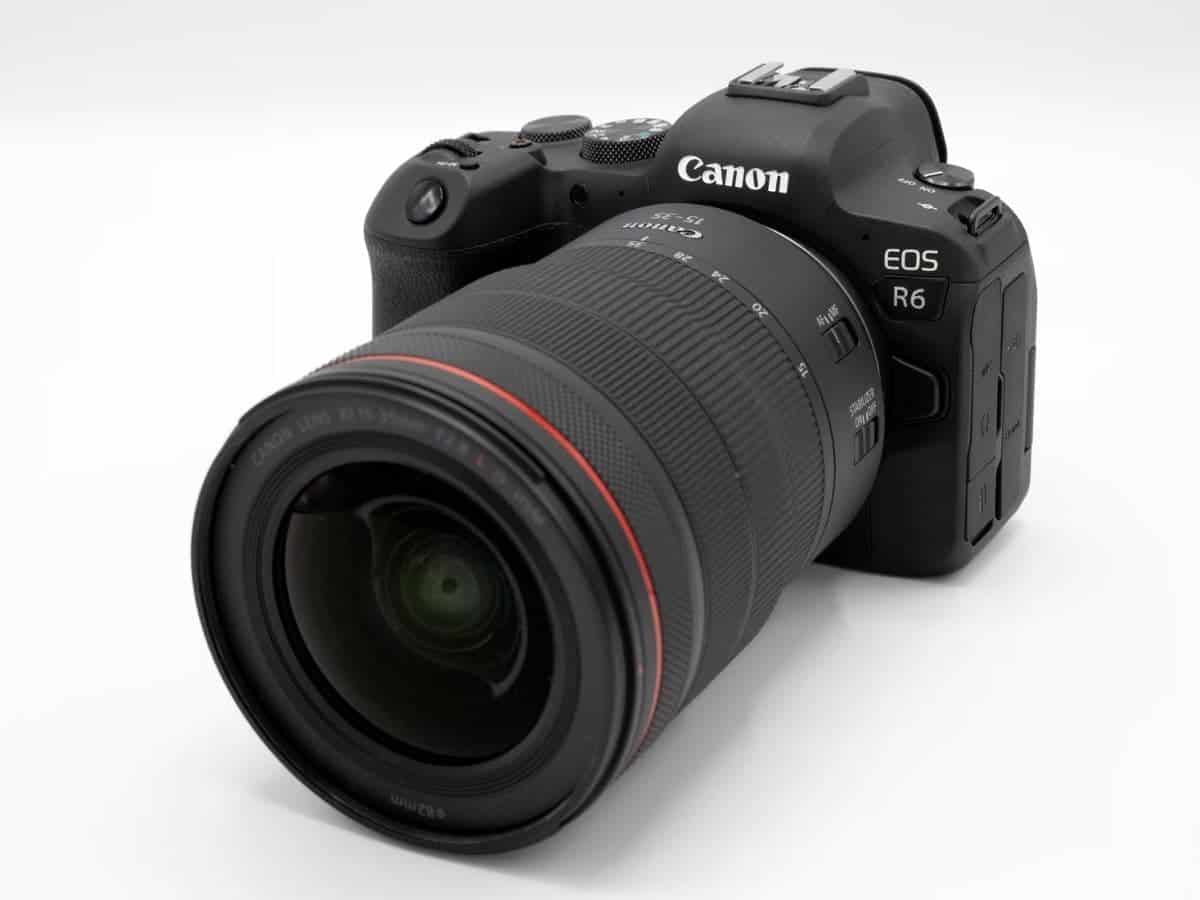
Canon’s R6 is the cheapest option among the R-series cameras. It has a 20 MP sensor resolution and features 5-axis in-body image stabilization.
While the R6 doesn’t offer 6K or 8K recording, it does have 4K60 video recording.
With the R6, Canon equipped it with an upgraded dual pixel autofocus system that features 1,053 selectable focusing points.
| Compare Canon EOS R6 (body only) prices |
|---|
| $2,499 at Canon |
| $2,499 at B&H |
| $2,499 at Amazon |
| $2,499 at Adorama |
Nikon cameras with IBIS
Nikon offers IBIS with its full-frame mirrorless Z-series. It works impeccably and the Z cameras are some of the overall best on the market.
The following are the cameras with IBIS from Nikon.
Nikon Z 5
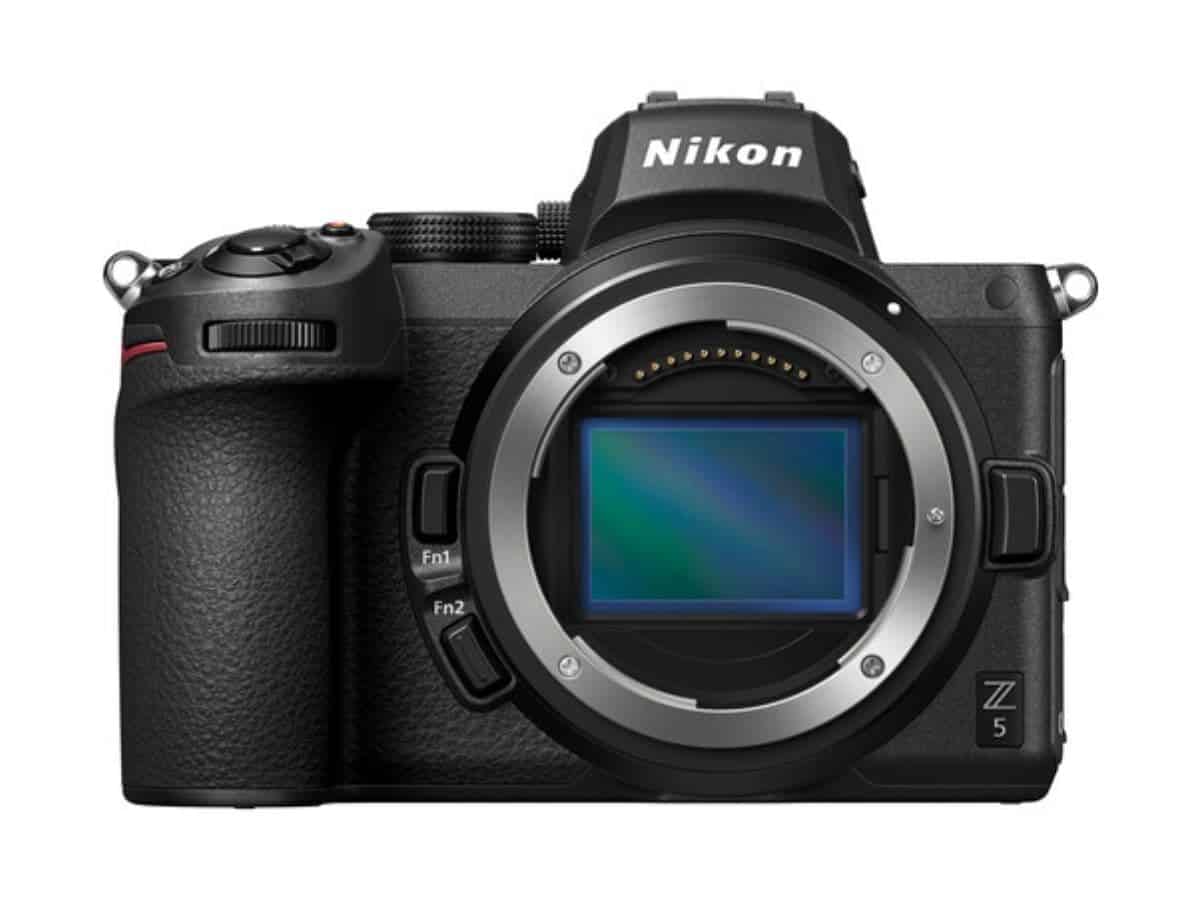
If you’re looking for an entry-level full-frame mirrorless camera for still images, look no further than Nikon’s Z 5.
It has a 24.3 MP sensor and a 5-axis IBIS system for a good price. Continuous shooting isn’t its strong suit, as the Z 5 can shoot 4.5 fps.
For video, the Z 5 can record 4K at 30 fps. It handles like Nikon’s higher-end Z cameras, making it an optimal and budget-friendly choice.
| Compare Nikon Z 5 (body only) prices |
|---|
| $1,299.95 at Nikon |
| $1,296.95 at B&H |
| $1,296.95 at Amazon |
| $1,296.95 at Adorama |
Nikon Z 6
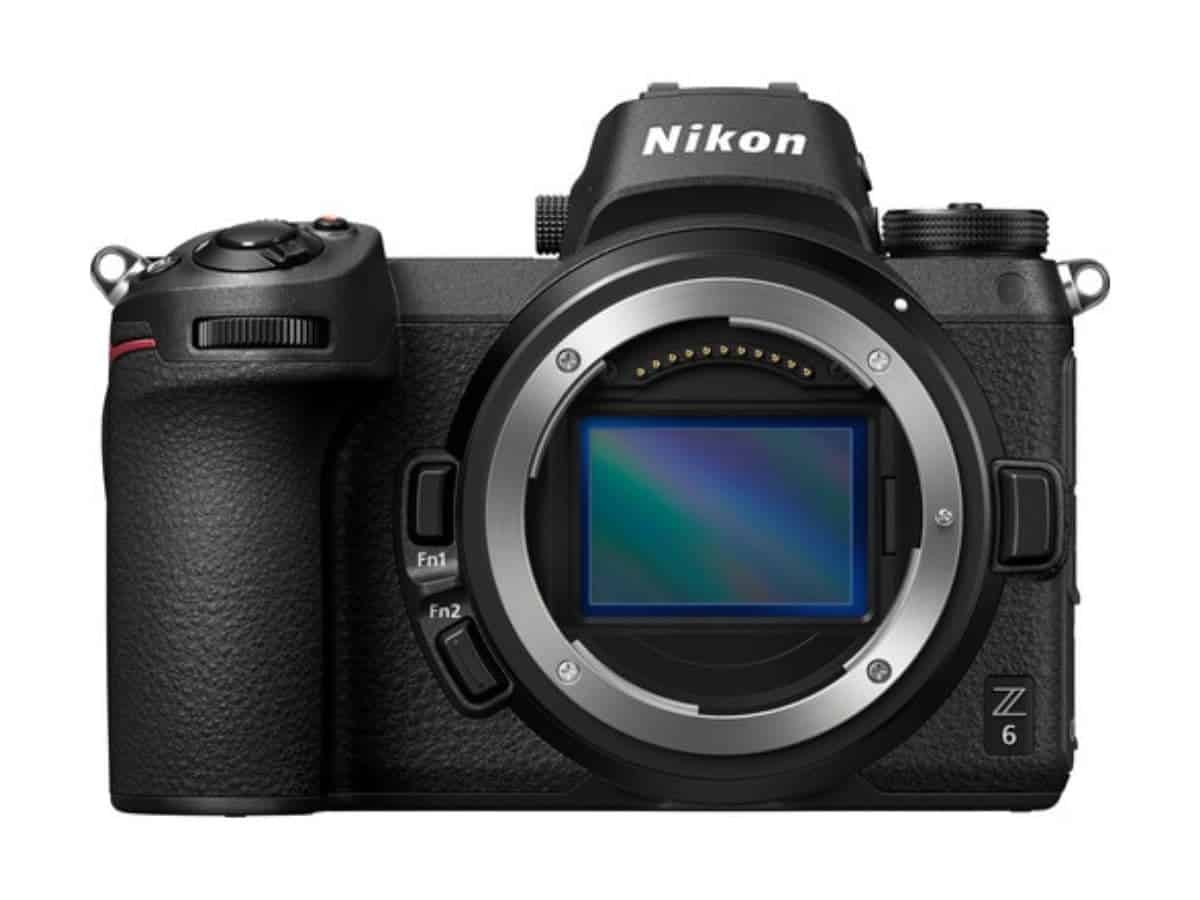
Nikon’s Z 6 is a capable camera with a 24.5 MP sensor and a 5-axis IBIS system.
Nikon positioned the Z 6 as an all-arounder capable of capturing great photos with its EXPEED 6 Image Processing Engine and recording 4K30 videos.
The Z 6 is underrated because it performs well in low-light conditions and offers excellent video performance at an accessible price.
| Compare Nikon Z 6 (body only) prices |
|---|
| $1,599.95 at Nikon |
| $1,596.95 at B&H |
| $1,596.95 at Adorama |
| $1,596.95 at Amazon |
Nikon Z 6II
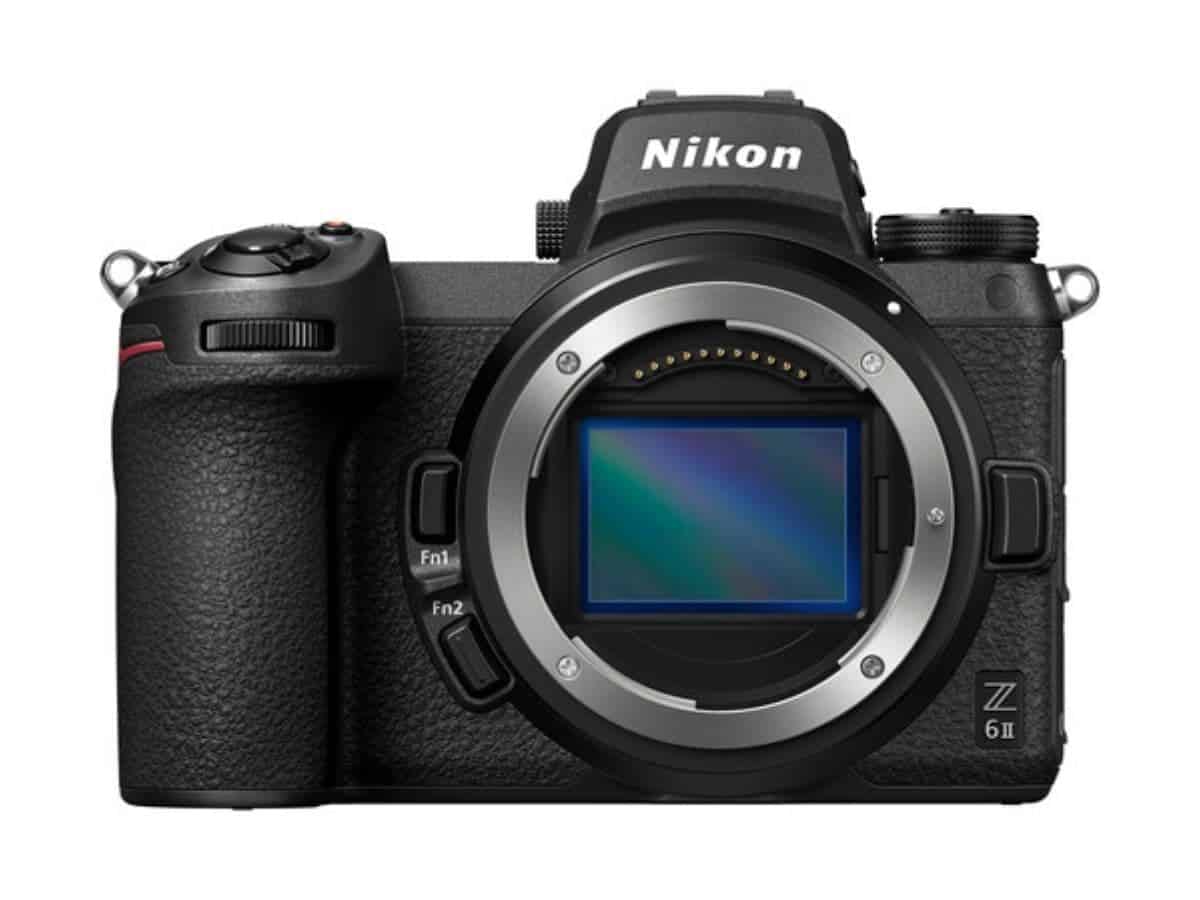
The Nikon Z 6II is the updated version of the Z 6. Like its predecessor, the Z 6II has a 24.5 MP sensor, a 5-axis IBIS system, and 4K30 video recording.
With the second version, Nikon focused on improving speed, faster processing, and making it more versatile.
The Z 6II has better buffer performance, a faster continuous shooting rate at 14 fps, and reduced blackout times in the viewfinder.
Additionally, long exposure times have lengthened to 900 seconds or 15 minutes.
Nikon will also release a firmware update, which will allow 4K video recording at 60p.
| Compare Nikon Z 6II (body only) prices |
|---|
| $1,999.95 at Nikon |
| $1,996.95 at B&H |
| $1,996.95 at Adorama |
| $1,949.99 at Amazon |
Nikon Z 7
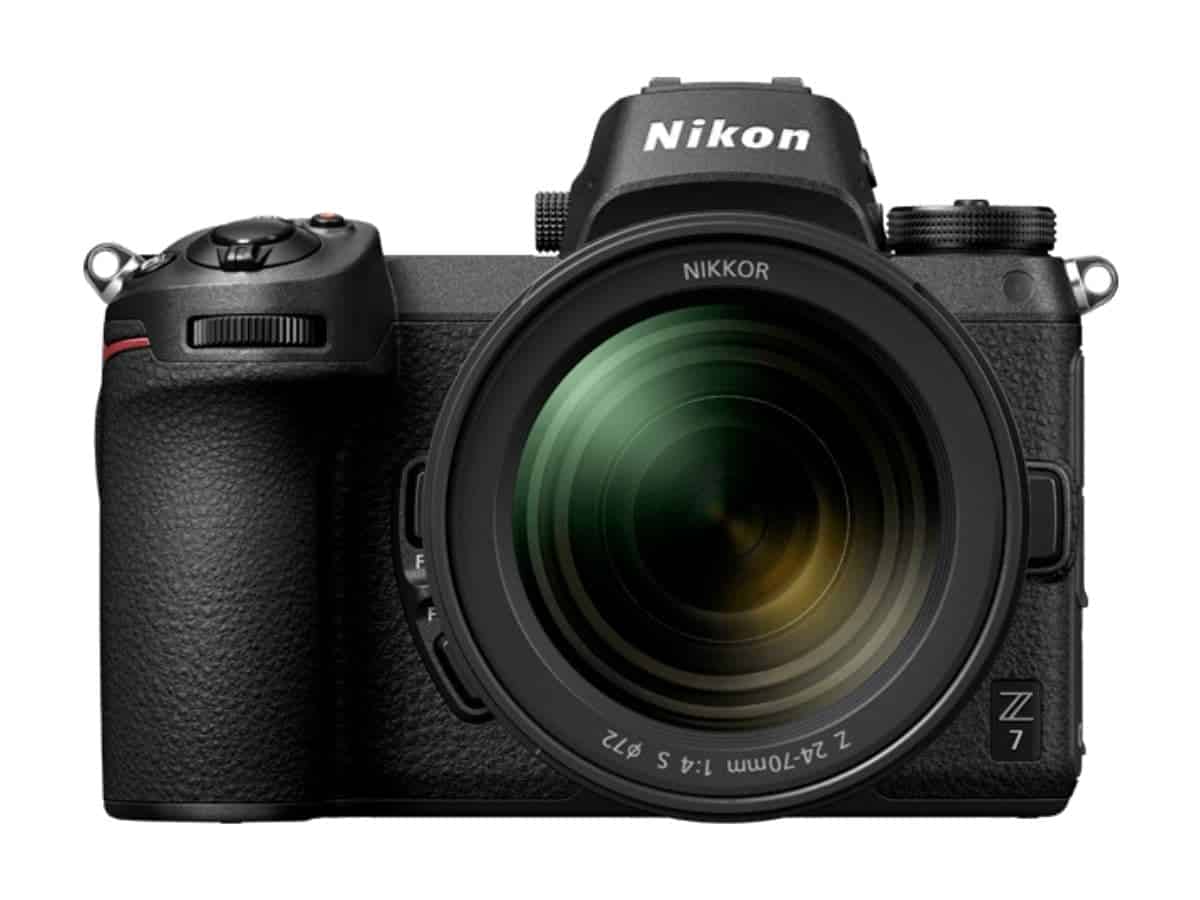
The Nikon Z 7 is the perfect balance of a full-frame mirrorless camera with the perfect balance of stills and videos.
It has a 45.7 MP sensor, 5-axis IBIS, records 4K videos at 30p, and has a high-performing 493-point autofocus system.
It’s a powerful camera with its main drawback being that it only has one memory card slot. Otherwise, it’s excellent.
| Compare Nikon Z 7 (body only) prices |
|---|
| $2,499.95 at Nikon |
| $2,496.95 at B&H |
| $2,496.95 at Amazon |
| $2,496.95 at Adorama |
Nikon Z 7II
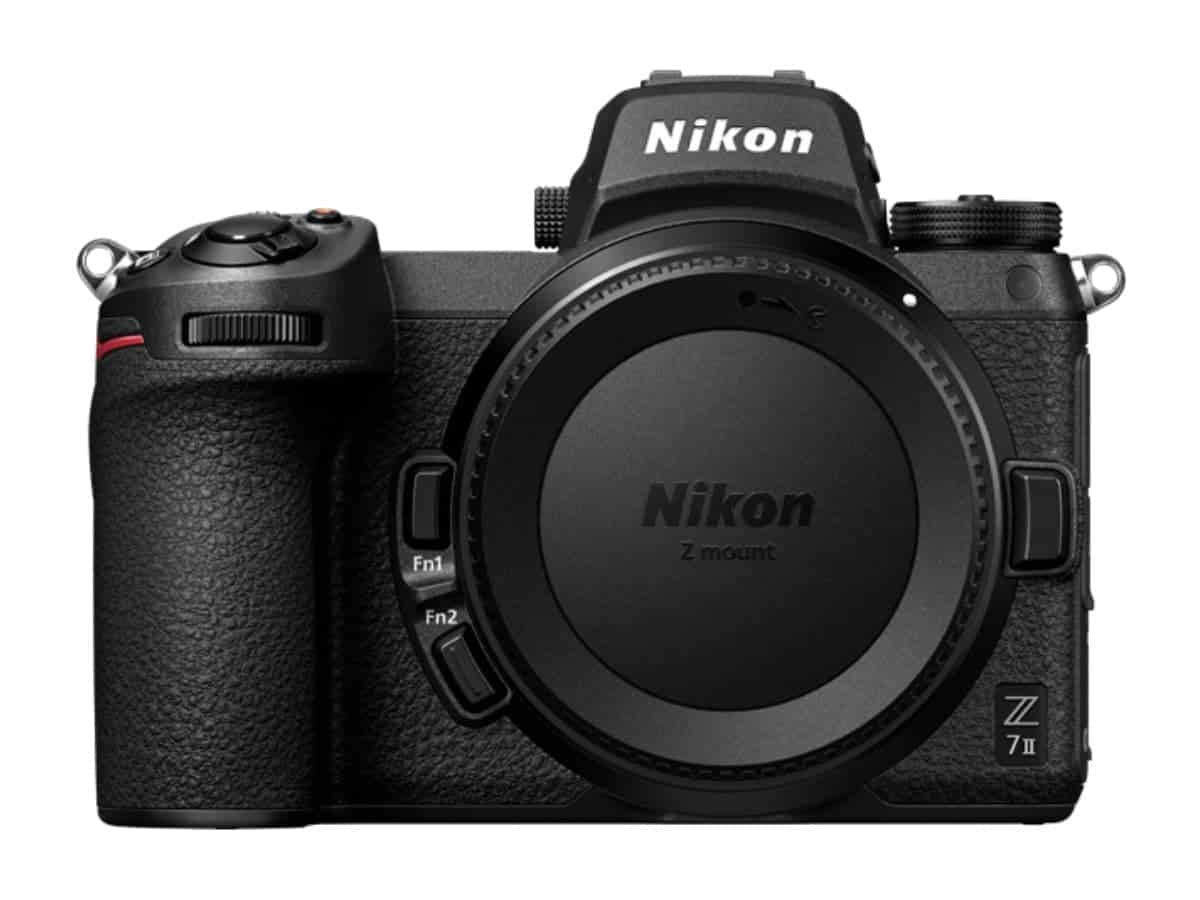
Nikon fixed the single memory card slot annoyance with the second generation Z 7.
The Nikon Z 7II is an even better version, as it also features Dual EXPEED 6 Image Processors. The Z 7II can also record 4K60 video.
It has the same 45.7 MP sensor, 5-axis IBIS, and 493-point autofocus system. Nikon’s updates make the second version worth picking over the previous Z 7.
| Compare Nikon Z 7II (body only) prices |
|---|
| $2,999.95 at Nikon |
| $2,996.95 at B&H |
| $2,996.95 at Adorama |
| $3,034.95 at Amazon |
Nikon Z 9
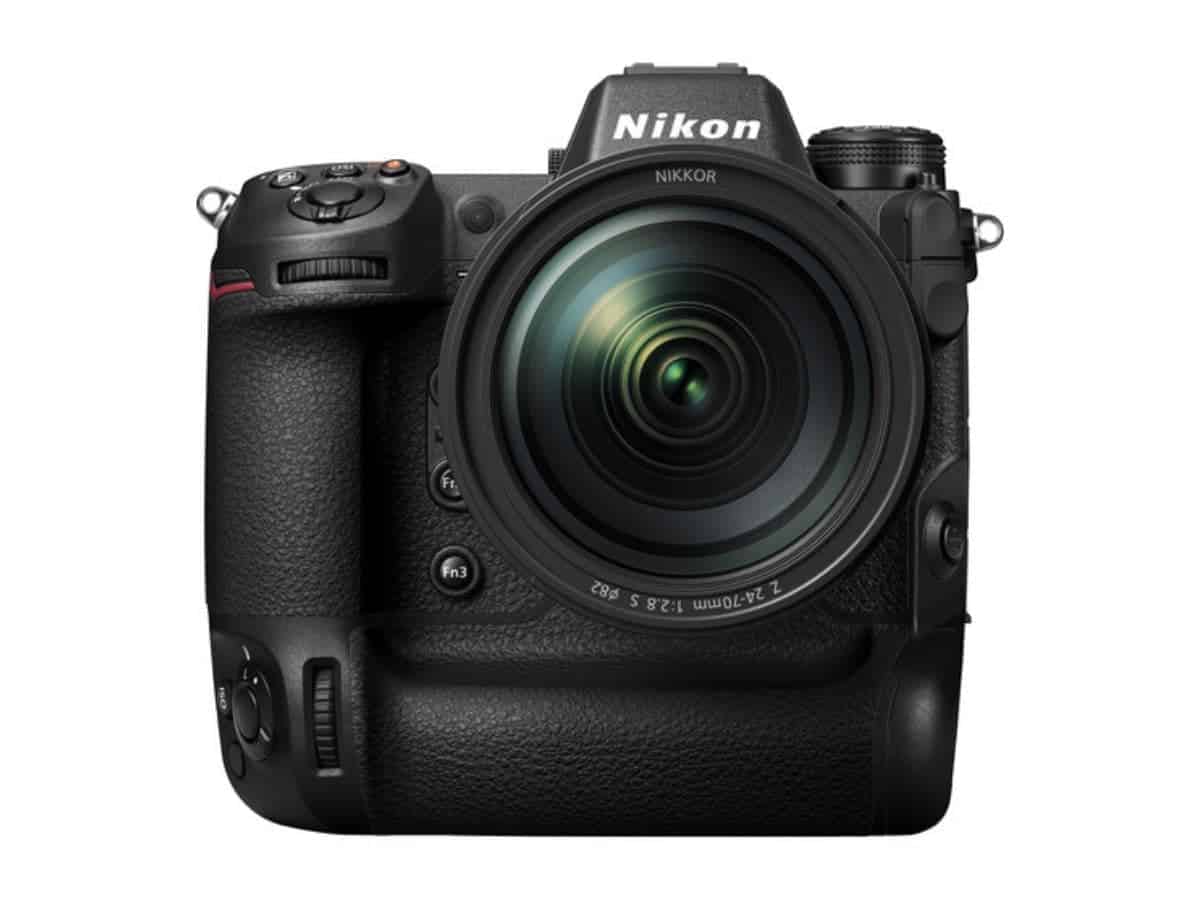
The Z 9 is Nikon’s flagship camera. It’s a professional-grade camera with a 45.7 MP sensor, a new EXPEED 7 Image Processor, 5-axis IBIS, 8K30p video, and even better autofocus.
Nikon’s Z 9 offers continuous shooting speeds of up to 20 fps Raw and 30 fps JPEG Shooting.
Sony’s a1 and Canon’s R3 are faster. However, the Z 9 has the chance to be a classic.
| Compare Nikon Z 9 (body only) prices |
|---|
| $5,499.95 at Nikon |
| $5,496.95 at B&H |
| $5,496.95 at Adorama |
| $5,496.95 at Focus Camera |
Sony cameras with IBIS
Sony has the most expansive lineup of cameras with IBIS. Additionally, Sony’s Alpha cameras are some of the best overall mirrorless cameras on the market.
Stabilization in Sony cameras produces excellent results, and the image quality is superb.
The following are the Sony cameras with IBIS.
Sony a6600
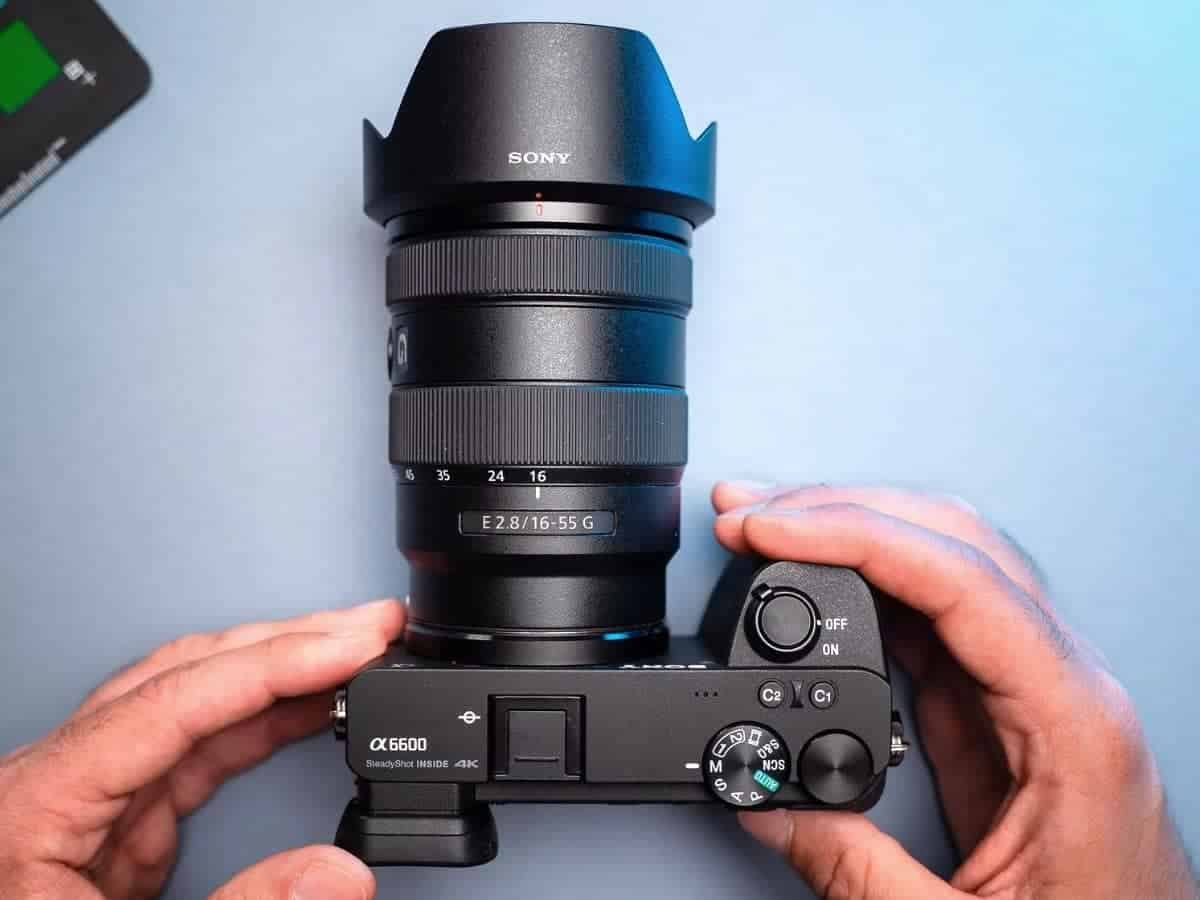
The a6600 is Sony’s flagship APS-C camera. It’s known for being fast, small, sleek, and versatile.
The Sony a6600 has a 24.2 MP sensor, 5-axis IBIS, and 4K30p video without a recording time limit.
Sony doesn’t take speed lightly, as the a6600 offers continuous shooting speeds up to 11 fps at 24.2 MP. It can capture up to 46 raw frames and 116 JPEG frames.
| Compare Sony a6600 (body only) prices |
|---|
| $1,399.99 at Sony |
| $1,398 at B&H |
| $1,398 at Amazon |
| $1,398 at Adorama |
| $1,398 at Moment |
Sony a1
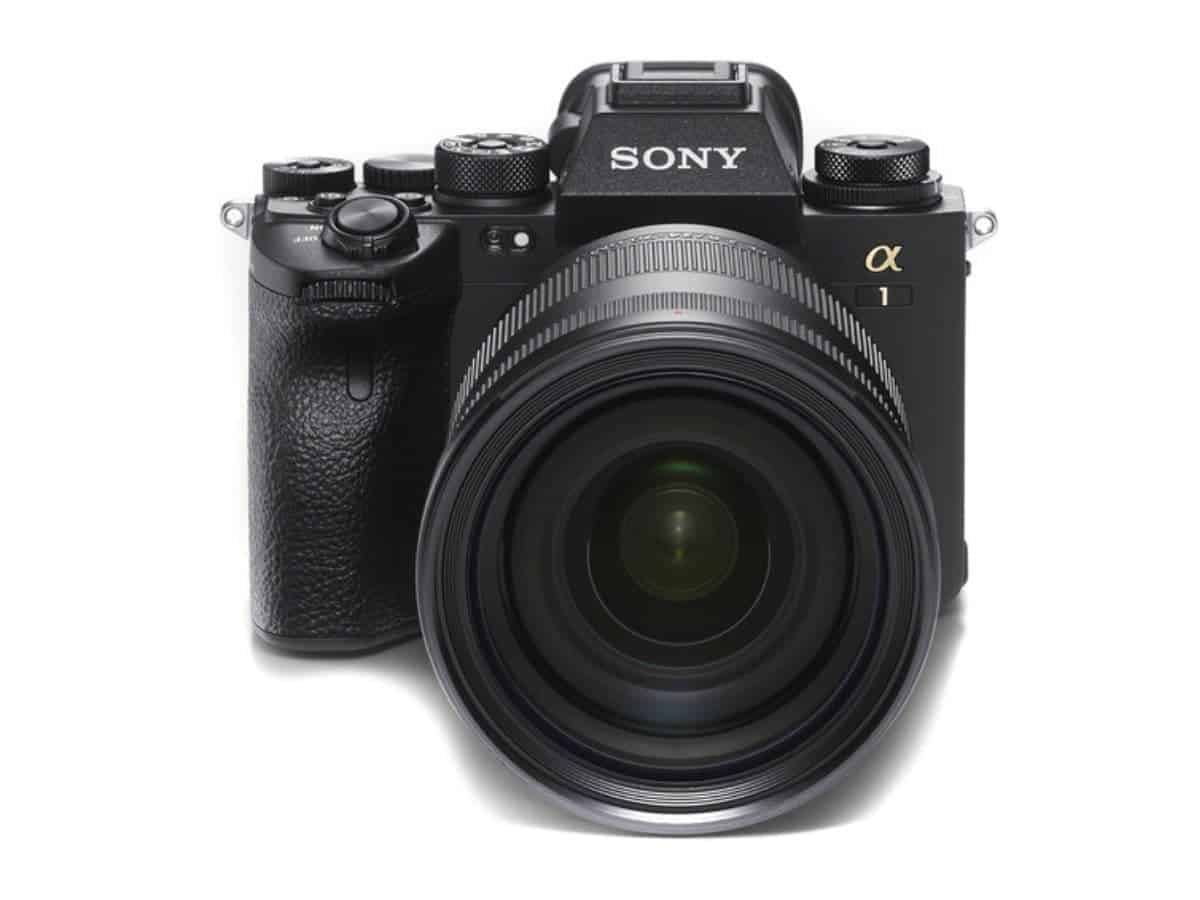
The a1 is Sony’s flagship mirrorless camera that can handle almost anything. It’s designed to be the one camera that can do it all.
The Sony a1 has a 50.1 MP stacked Exmor RS image sensor capable of up to 30 fps continuous shooting.
It also features 5-axis IBIS, 8K 30p and 4K 120p video, and an incredible dynamic range.
The a1 is Sony’s most innovative and technologically advanced camera.
| Compare Sony a1 (body only) prices |
|---|
| $6,499.99 at Sony |
| $6,498 at B&H |
| $6,498 at Adorama |
| $6,498 at Moment |
| $6,498 at Amazon |
Sony a7 II
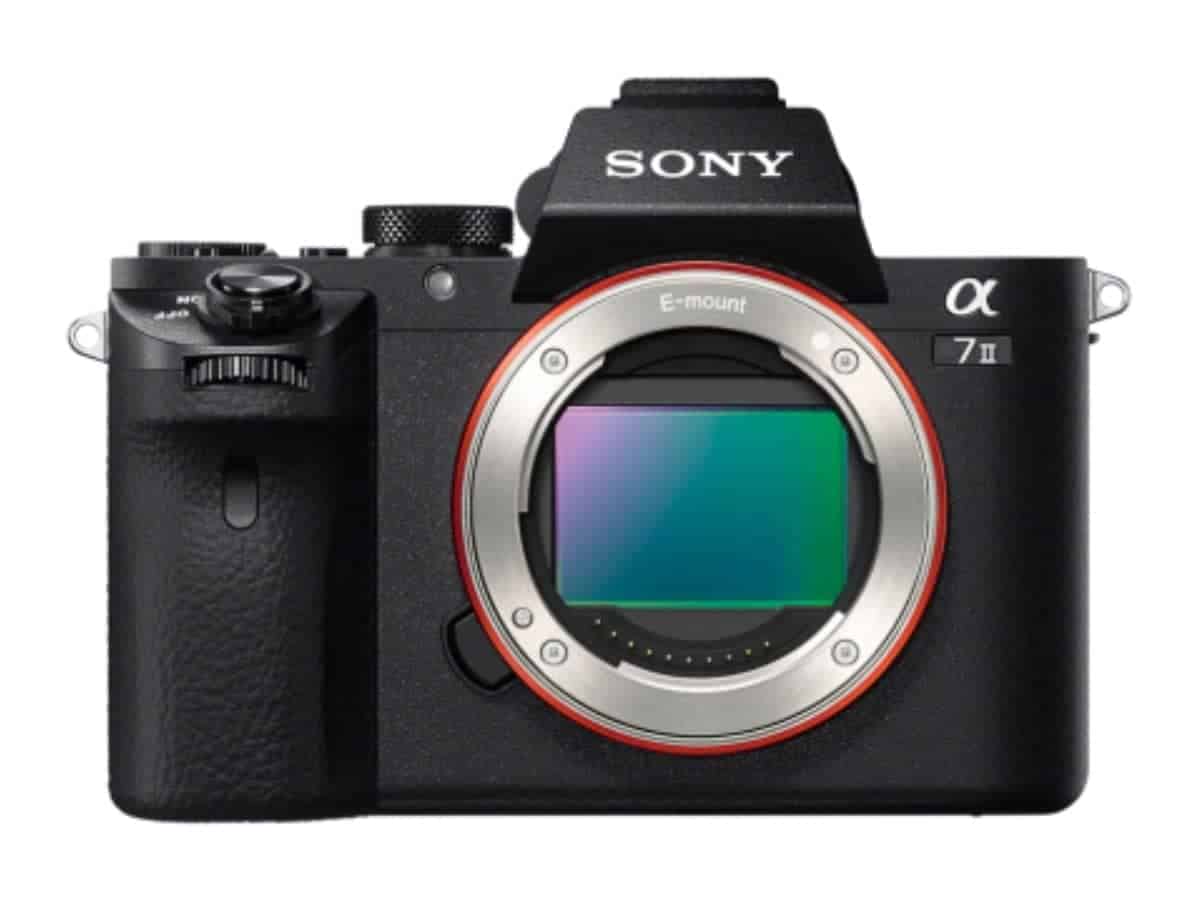
The Sony a7 II doesn’t have the latest technology, but it’s an excellent and valuable camera.
It has a full-frame 24.3 MP sensor, 5-axis IBIS, 117 phase-detection, and 25 contrast-detection autofocus points.
The a7 II shoots full HD and doesn’t offer 4K, which is a drawback. Still, you get a lot of value for the money.
| Compare Sony a7 II (body only) prices |
|---|
| $1,399.99 at Sony |
| $1,398 at B&H |
| $1,398 at Adorama |
| $1,398 at Amazon |
Sony a7 III
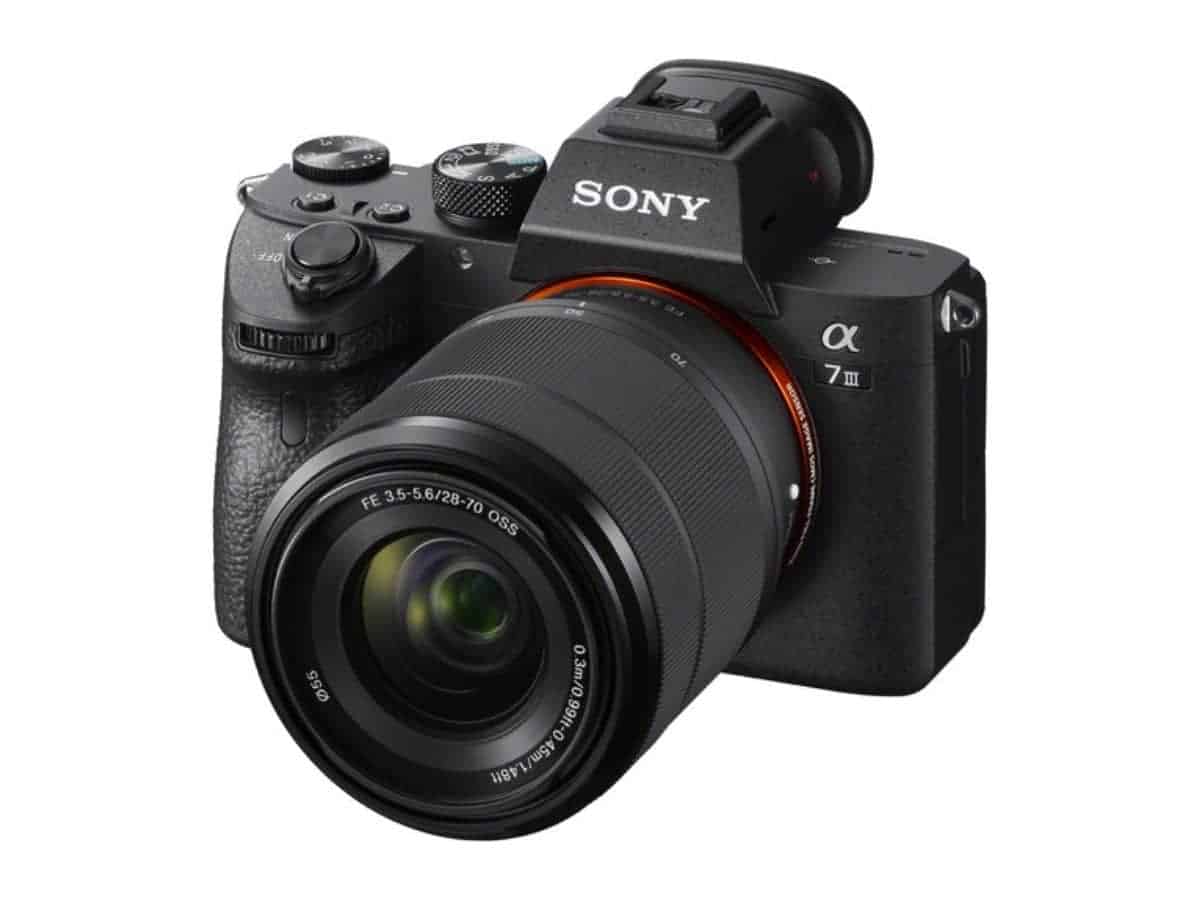
Sony a7 III is an incredible entry-level camera. It has a 24.2 MP sensor, 5-axis IBIS, 4K30p video, and a 693-point hybrid autofocus system.
It’s an upgrade from the a7 II because of the 4K video capabilities, better autofocus system, and 10 fps continuous shooting, compared to 5 fps.
The a7 III also maintains more details and better colors.
If you have a budget of around $2,000, go with the a7 III because it’s newer and offers a great taste of the mirrorless life.
| Compare Sony a7 III (body only) prices |
|---|
| $1,999.99 at Sony |
| $1,998 at B&H |
| $1,998 at Amazon |
| $1,998 at Adorama |
| $1,998 at Target |
Sony a7 IV
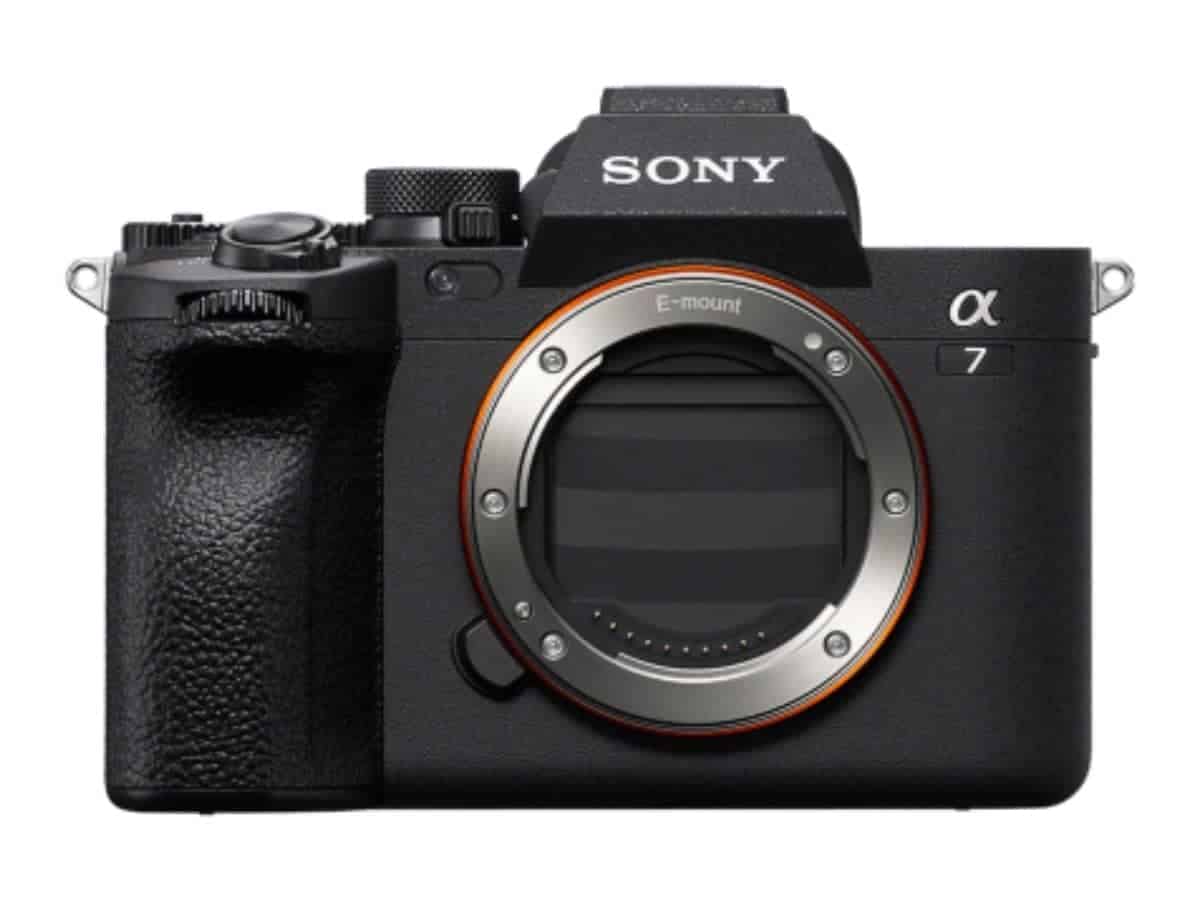
Sony’s a7 IV is the latest generation and most advanced version of the a7.
It has a 33 MP Exmor R full-frame sensor, 5-axis IBIS, 4k60p video, and offers up to 10 fps continuous shooting.
The new 33 MP sensor is an upgrade from the previous 24 MP sensor. It works better in low-light conditions, offers better clarity, dynamic range, and color rendering.
With the improvements, Sony also gave it a higher price tag, which removes it from the entry-level market based on price. Regardless, it’s a capable camera.
| Compare Sony a7 IV (body only) prices |
|---|
| $2,499.99 at Sony |
| $2,498 at B&H |
| $2,498 at Adorama |
| $2,498 at Moment |
Sony a7R IIIA
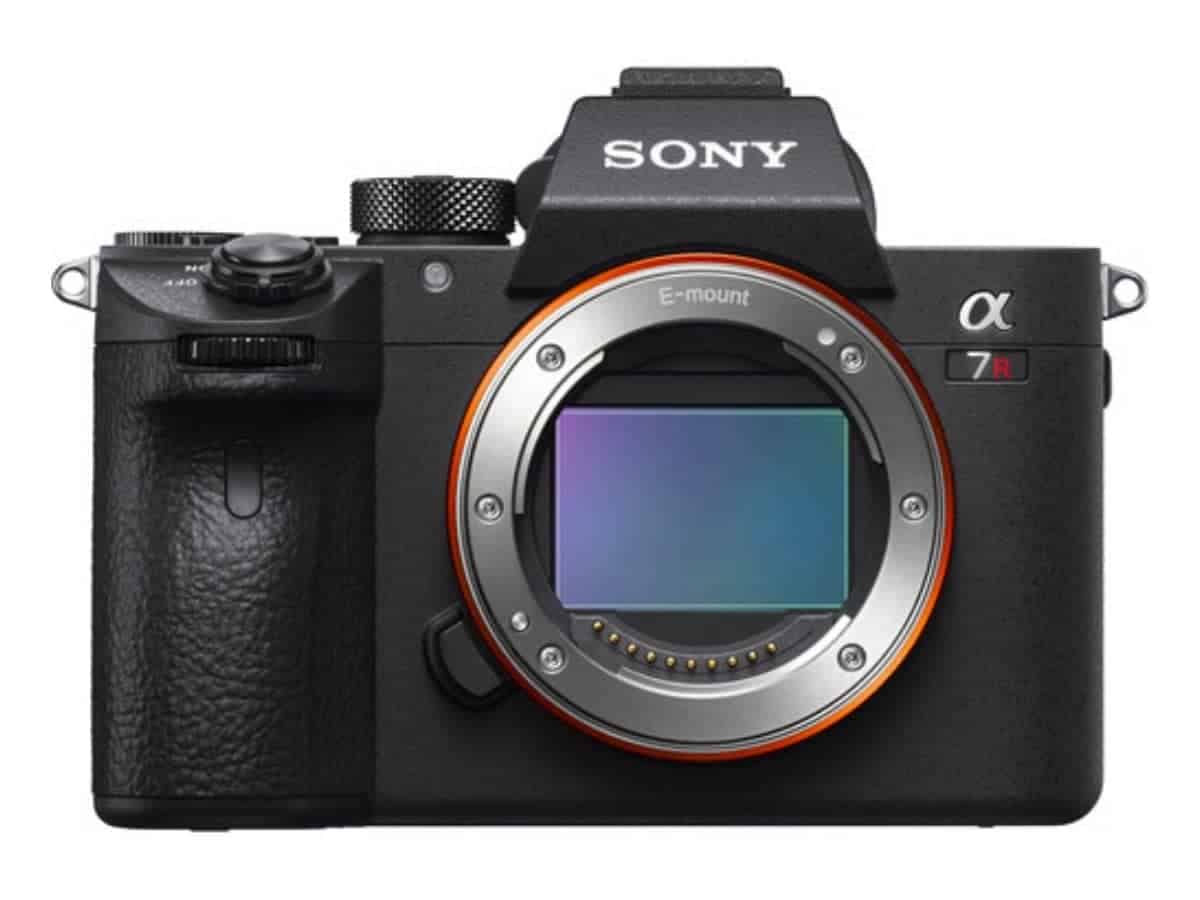
The Sony a7R IIIA is an improvement on the a7R III. Overall, the two are similar cameras.
The most notable difference is that the a7R IIIA has an LCD resolution of 2,359,296 dots, compared to 1,440,000 dots.
Otherwise, it’s almost the same camera, as it has the 42.4 MP sensor, 5-axis IBIS, a fast autofocus system with 399 phase-detection points, and 4K30p video.
| Compare Sony a7R IIIA (body only) prices |
|---|
| $1,999.99 at Sony |
| $1,998 at B&H |
| $1,998 at Adorama |
Sony a7R IVA
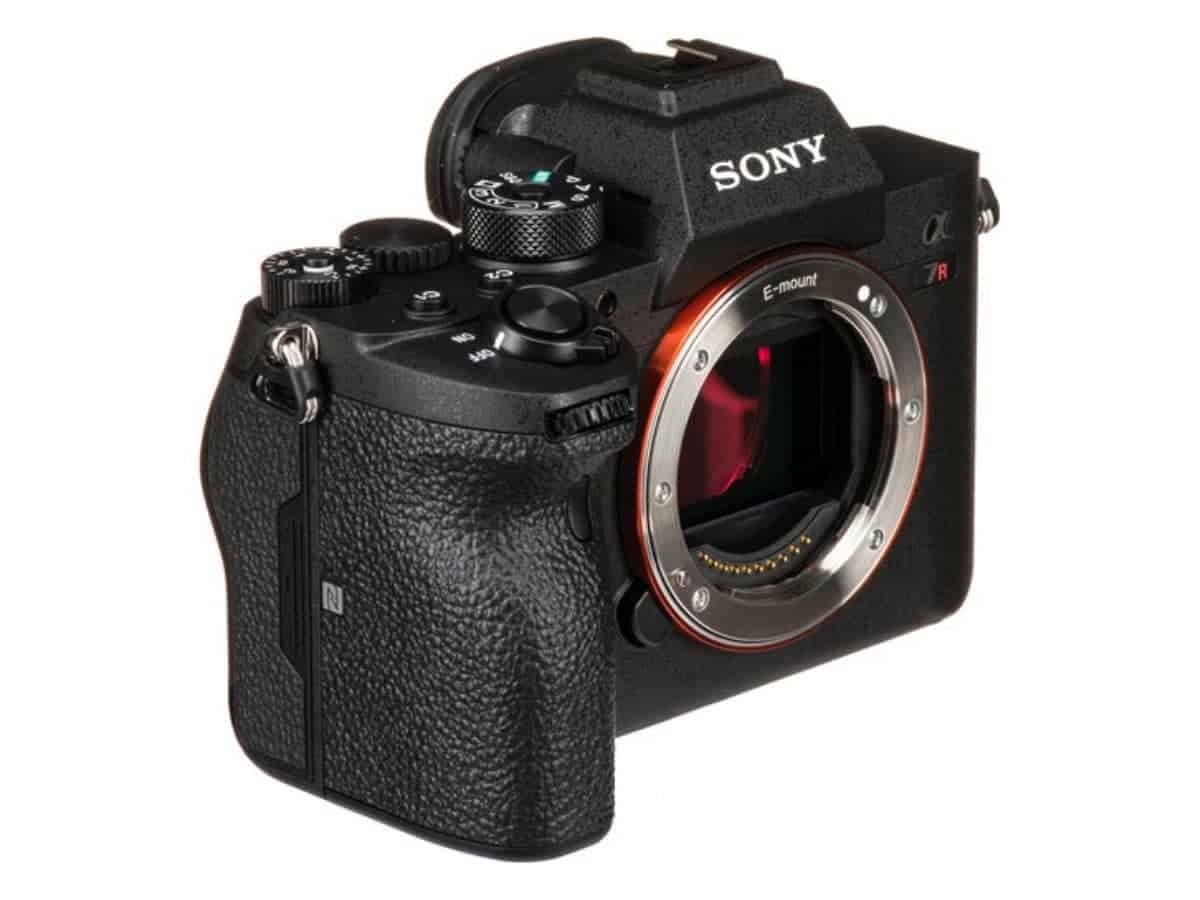
Compared to the previous a7R IV, the a7R IVA only has a better LCD resolution of 2,359,296 dots instead of 1,440,000 dots. Otherwise, the specifications are the same.
Sony’s a7R IVA boasts a back-illuminated 61MP full-frame Exmor R sensor, 5-axis IBIS, 4K30p video, and remarkable handling.
| Compare Sony a7R IVA (body only) prices |
|---|
| $2,999.99 at Sony |
| $2,998 at B&H |
| $2,998 at Adorama |
| $2,998 at Moment |
Sony a7S III
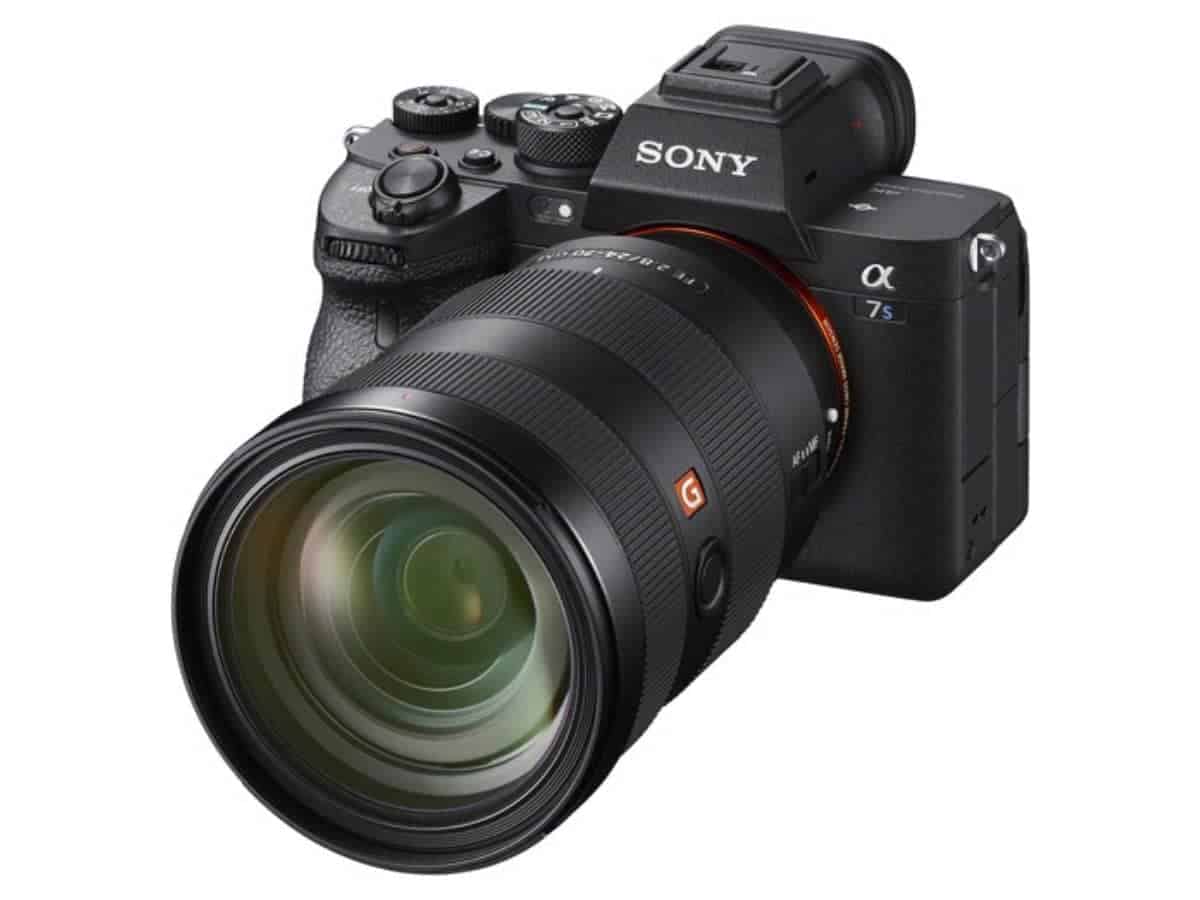
The Sony a7S III is built for videographers. It has a 12.1 MP sensor, 5-axis IBIS, 4K120p video, and a fast 759-point autofocus system.
Compared to most cameras, the 12 MP resolution is low. However, the a7S III captures incredible footage and has great battery life.
It’s not an impressive camera for still photos, but it’s a capable option for videos.
| Compare Sony a7S III (body only) prices |
|---|
| $3,499.99 at Sony |
| $3,498 at B&H |
| $3,498 at Adorama |
| $3,498 at Moment |
Sony a7C
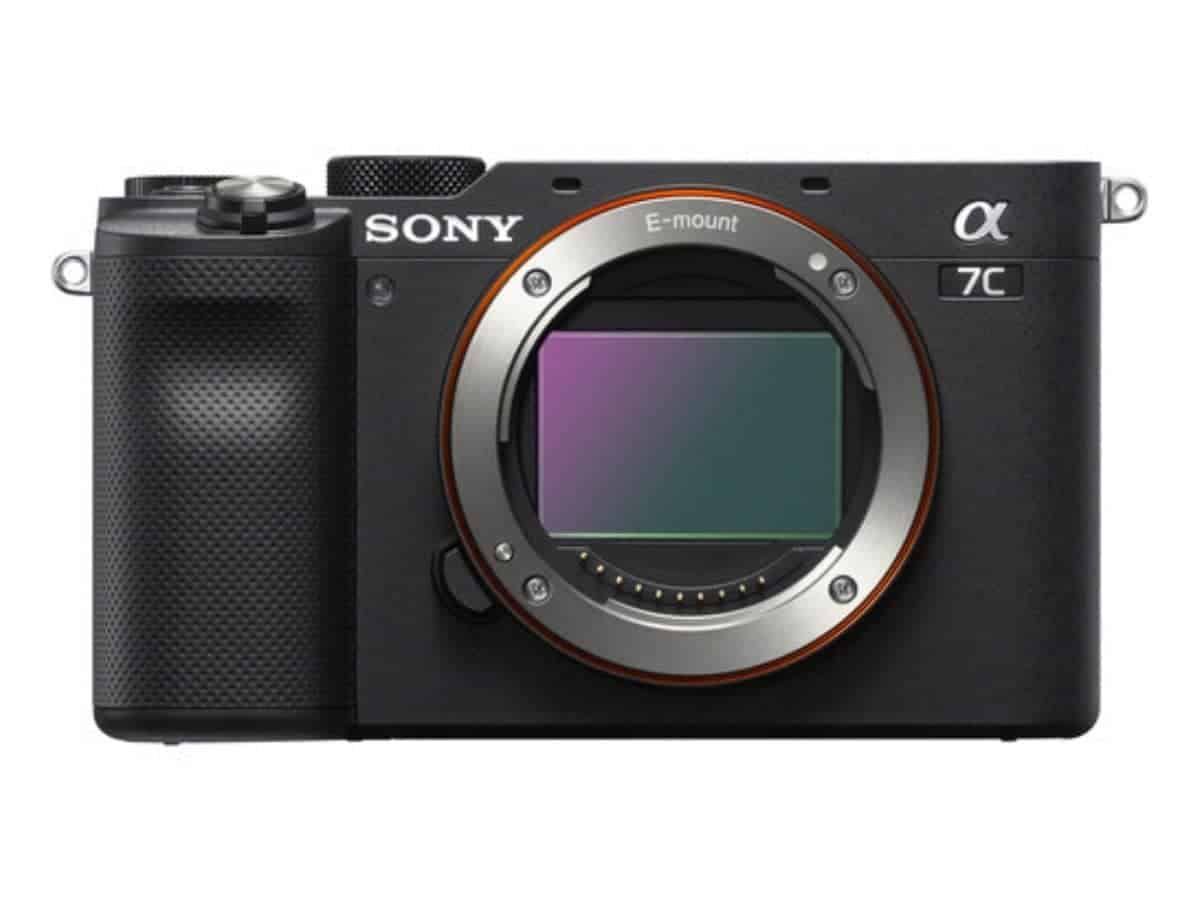
Sony’s a7C is only 4.9 inches wide and 2.8 inches tall, making it one of the smallest full-frame cameras on the market.
The a7C has a 24.2 MP sensor, 5-axis IBIS, excellent autofocus performance with its 693-point system, and 4K30p video. It also has a flip-out LCD, convenient for vlogging and videos.
The a7C is an excellent choice if you’re looking for a small full-frame camera with great battery life, fast autofocus, and high-quality video capabilities.
| Compare Sony a7C (body only) prices |
|---|
| $1,799.99 at Sony |
| $1,798 at B&H |
| $1,798 at Adorama |
| $1,798 at Moment |
| $1,798 at Amazon |
Sony a9 II
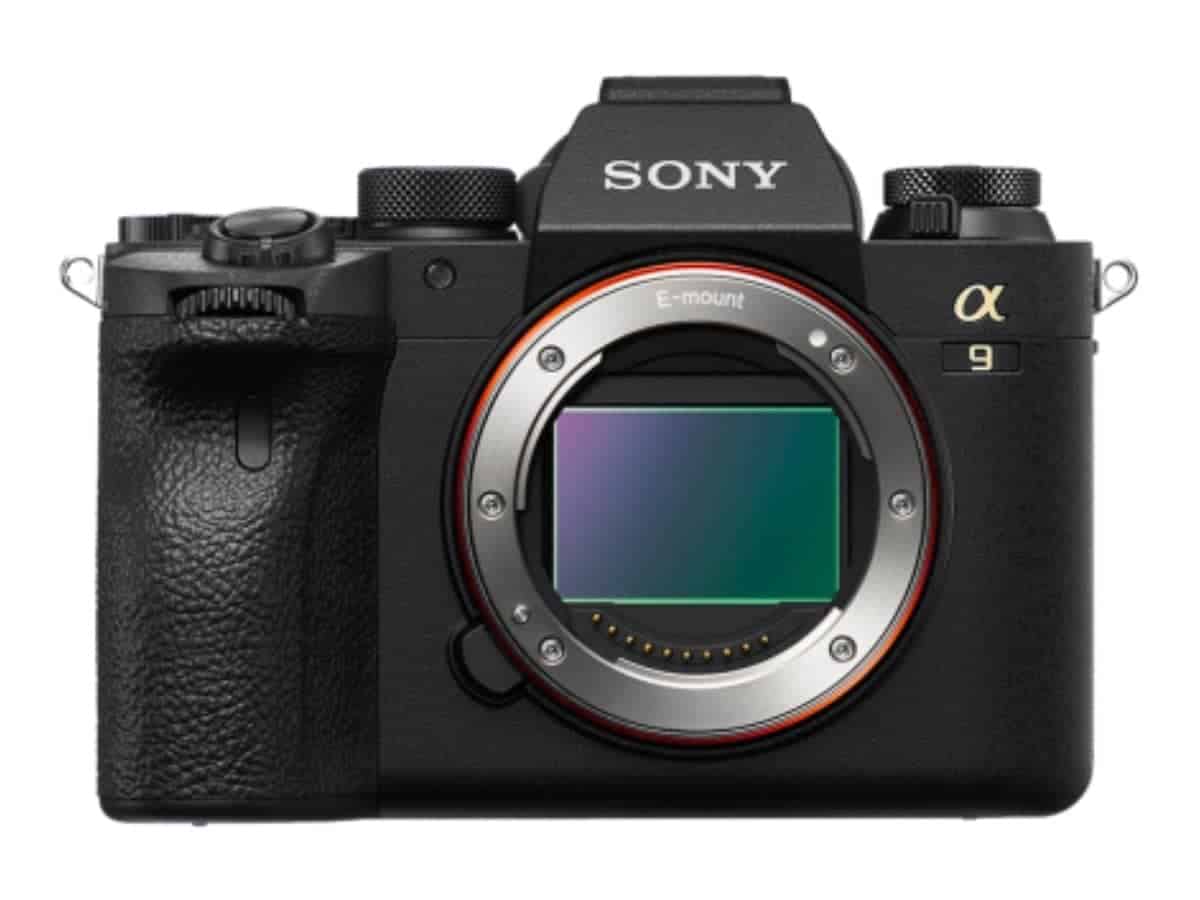
The Sony a9 II is the second generation of the incredible a9. It has a refined body, better connectivity, and faster performance.
The a9 II contains a 24.2 MP full-frame Exmor RS CMOS sensor, 5-axis IBIS, a 693-point autofocus system, and up to 20 fps continuous shooting with its electronic shutter. With the mechanical shutter, you can shoot up to 10 fps.
The bottom line is that the a9 II is a capable camera, but the video features aren’t as good as other similarly-priced cameras.
| Compare Sony a9 II (body only) prices |
|---|
| $4,499.99 at Sony |
| $4,498 at B&H |
| $4,498 at Moment |
| $4,498 at Adorama |
| $4,498 at Amazon |
Panasonic cameras with IBIS
Lumix is Panasonic’s camera brand, and it makes excellent cameras that perform well for photos and videos.
The following are the Panasonic Lumix cameras with IBIS.
Panasonic Lumix G9
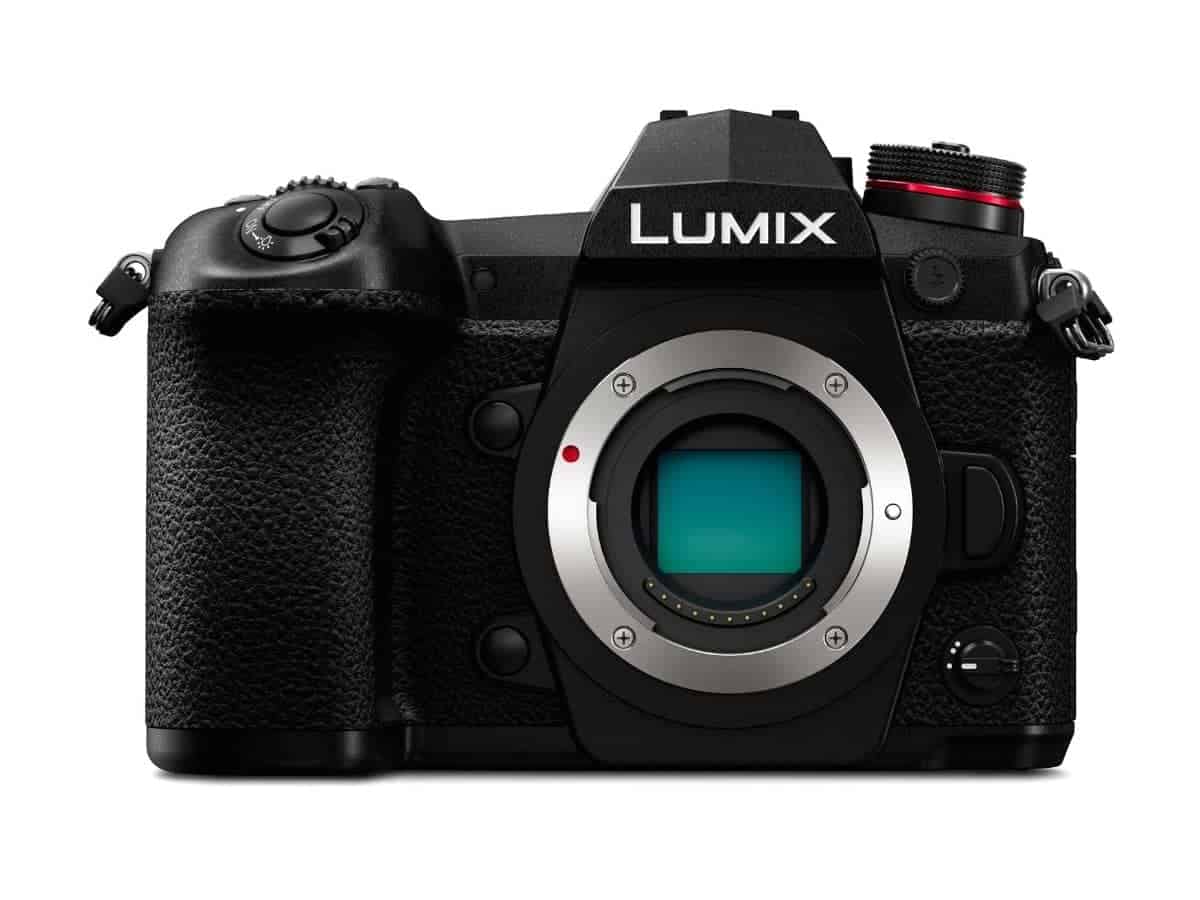
The Panasonic Lumix G9 offers great performance with a robust system and a budget-friendly price tag.
The G9 has a 20.3 MP sensor, 5-axis IBIS, 4K60p video, fast autofocus, and it boasts improved JPEG colors.
It doesn’t offer an ultra-high resolution, but it performs well for stills and videos.
The G9 also feels great to hold. It’s comfortable and lightweight.
| Compare Panasonic Lumix G9 (body only) prices |
|---|
| $997.99 at B&H |
| $997.99 at Adorama |
| $997.99 at Amazon |
Panasonic Lumix G95
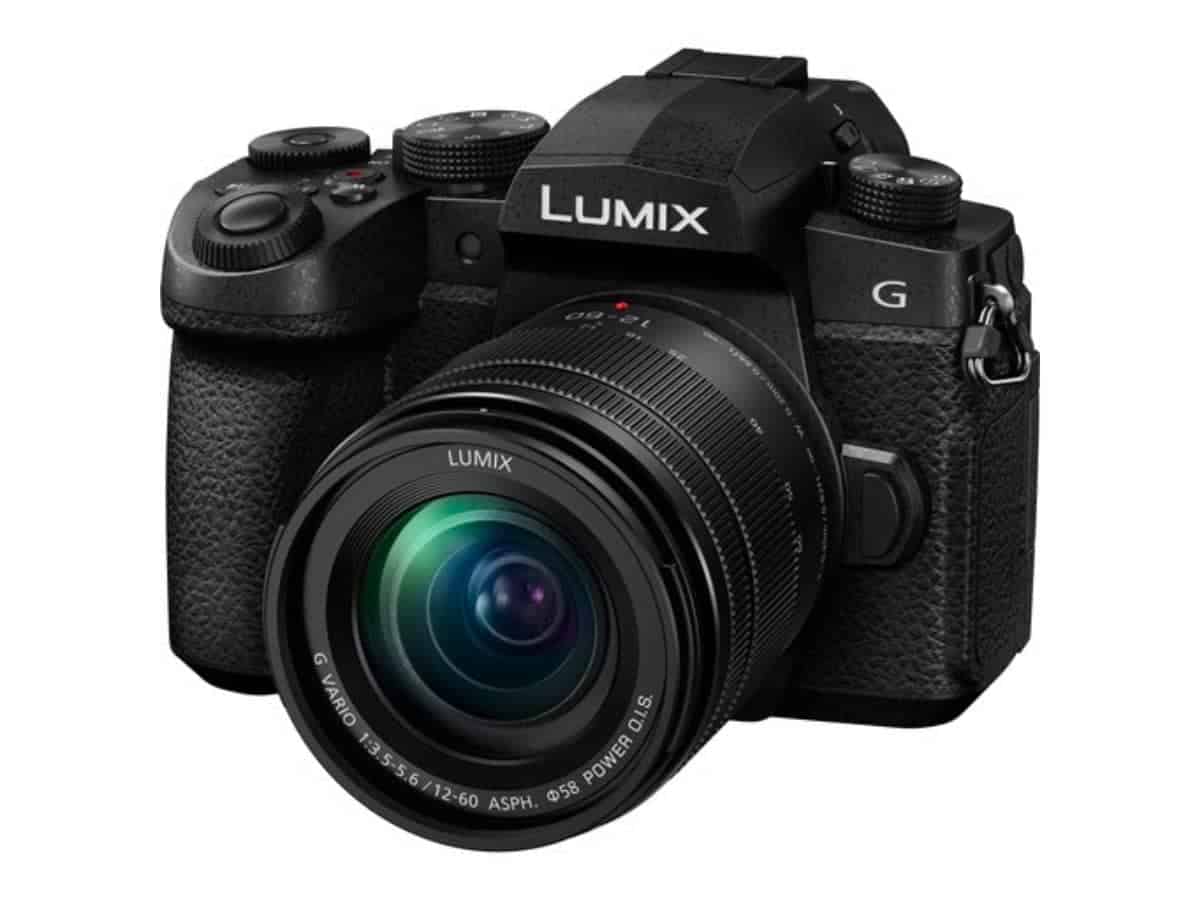
Panasonic’s Lumix G95 is one of the cheapest mirrorless cameras with in-body image stabilization.
It has a 20.3 MP sensor and can record 4K30p videos. It’s better for videographers than photographers but can work as an entry-level hybrid camera.
The G95 also has a flip-out LCD, which makes vlogging and videos easier.
While it’s not a headline-making camera, it’s a versatile, easy to use, and great overall camera.
| Compare Panasonic Lumix G95 with 12-60mm lens prices |
|---|
| $697.99 at B&H |
| $697.99 at Adorama |
| $697.99 at Focus Camera |
| $779.00 at Amazon |
Panasonic Lumix S1H
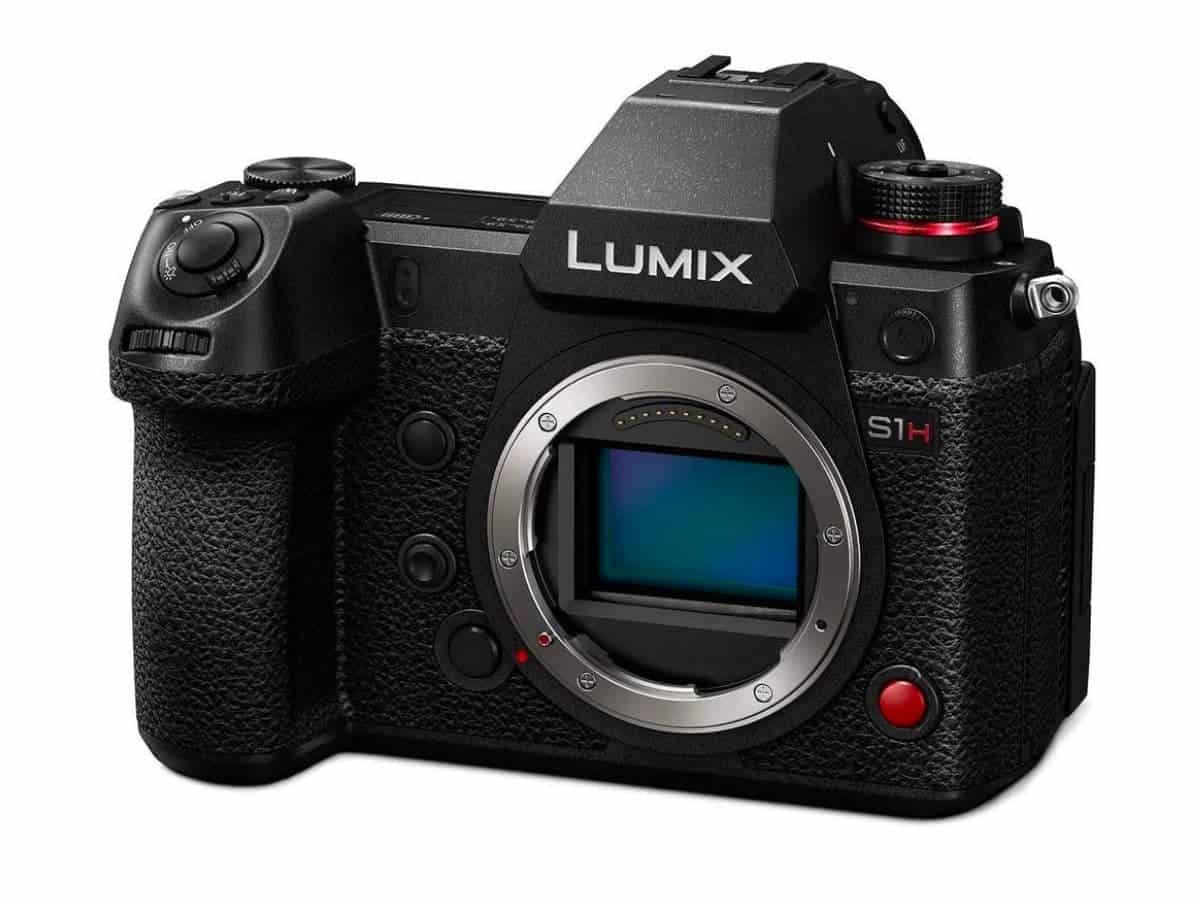
The Panasonic Lumix S1H is a video powerhouse. It has a 24.2 MP full-frame CMOS sensor, offers 6K24p video, 5-axis IBIS, and a broad 14-stop dynamic range.
One of the best aspects of the S1H is that it’s Netflix-approved. Plus, it’s the smallest and cheapest camera with the badge.
Its main drawbacks are that it doesn’t have a high-performing autofocus system or raw video capture.
| Compare Panasonic Lumix S1H (body only) prices |
|---|
| $3,497.99 at B&H |
| $3,497.99 at Focus Camera |
| $3,497.99 at Amazon |
| $3,497.99 at Adorama |
Panasonic Lumix S5
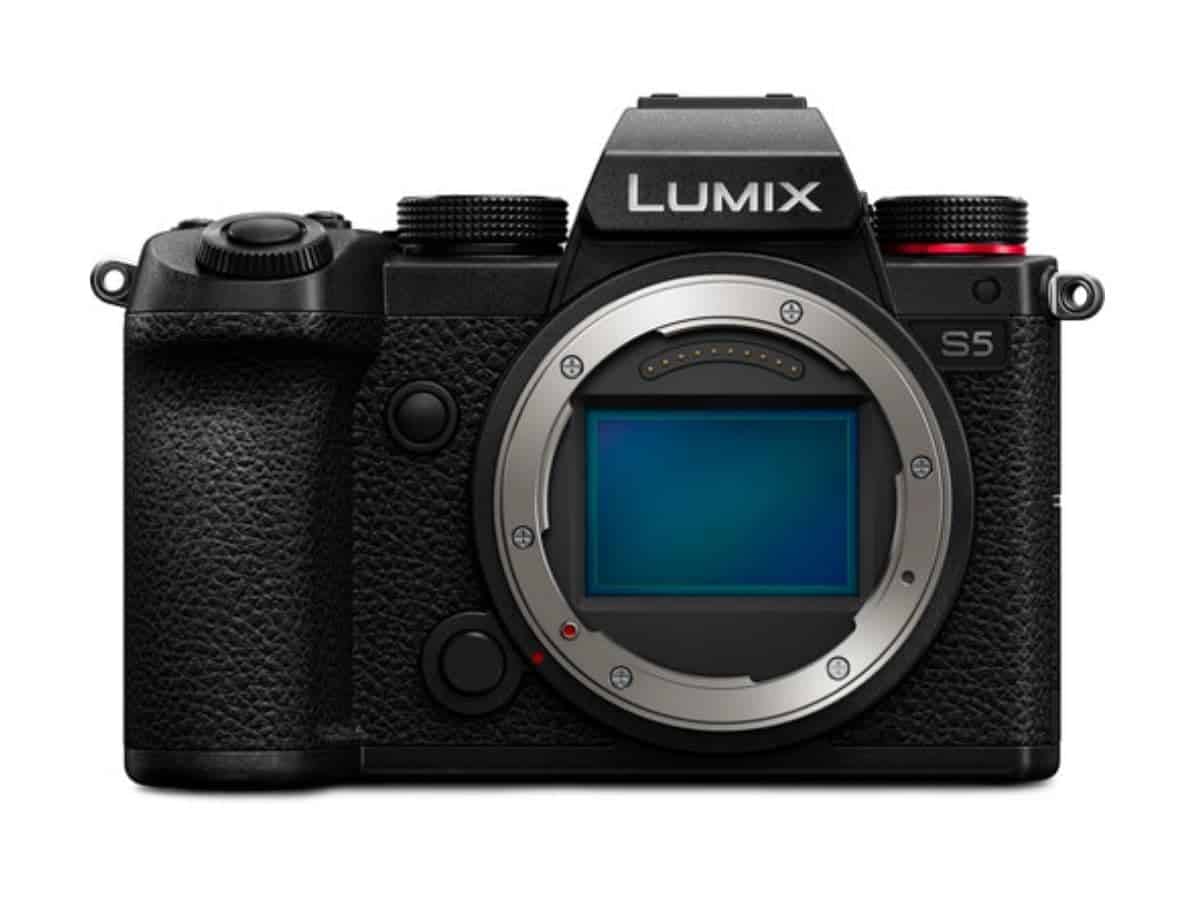
The Lumix S5 from Panasonic is a well-rounded and versatile camera.
It has a 24.2 MP full-frame sensor, 5-axis IBIS, can record 4K60 video, and offers up to 7 fps continuous shooting.
The S5 is designed to be a budget-friendly camera that fits the needs of entry-level and amateur photographers and videographers. Plus, it boasts improved autofocus and a weather-sealed body.
| Compare Panasonic Lumix S5 (body only) prices |
|---|
| $1,697.99 at B&H |
| $1,697.99 at Amazon |
| $1,697.99 at Focus Camera |
| $1,697.99 at Adorama |
Panasonic Lumix GH5
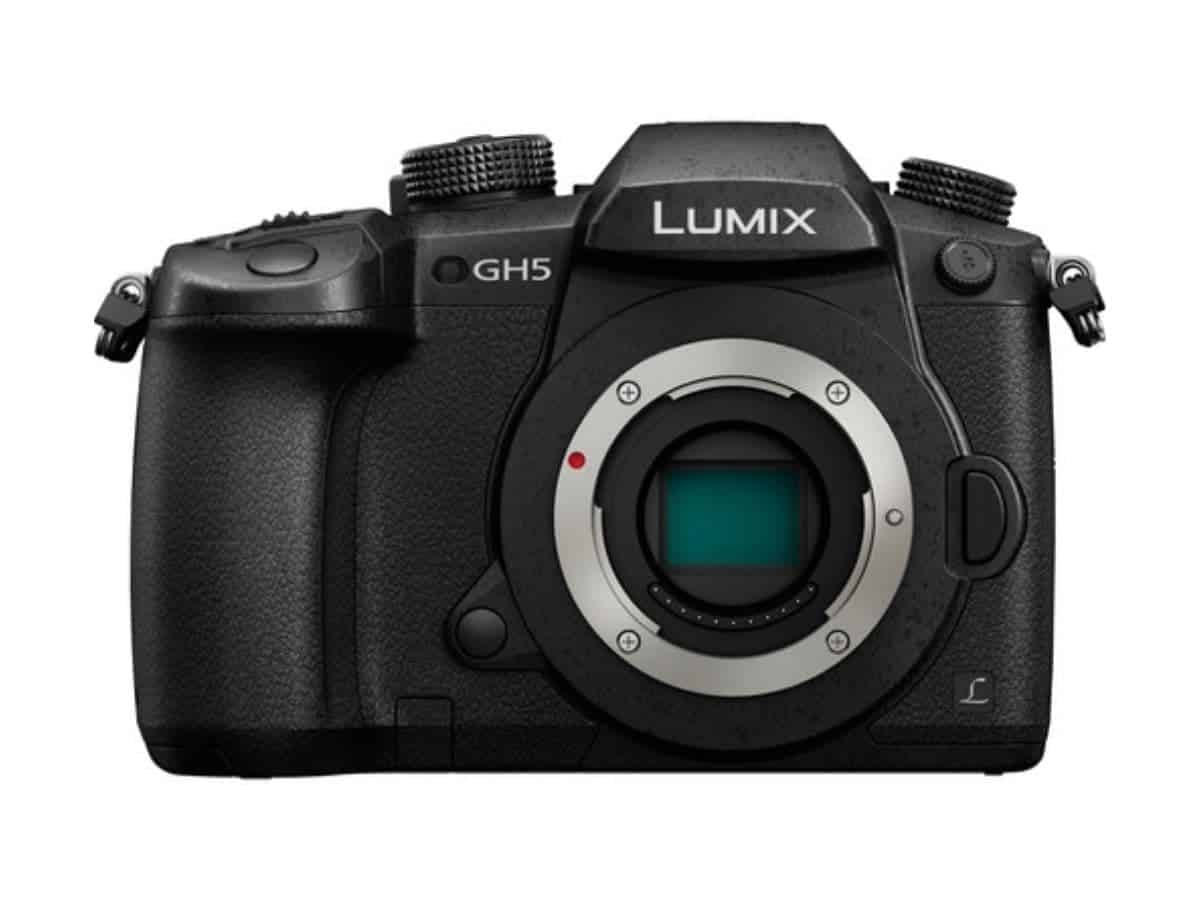
Panasonic’s Lumix GH5 is packed with excellent features and has a stabilization system that can compensate for about five stops of camera shake.
The GH5 has a 20.3 MP sensor and can capture 4K video without cropping. Due to the decent resolution, it’s ideal for video more than photos.
Like many other Panasonic cameras, the GH5 has a solid, weather-resistant build.
| Compare Panasonic Lumix GH5 (body only) prices |
|---|
| $1,297.99 at B&H |
| $1,297.99 at Amazon |
| $1,297.99 at Adorama |
Panasonic Lumix GH5 II
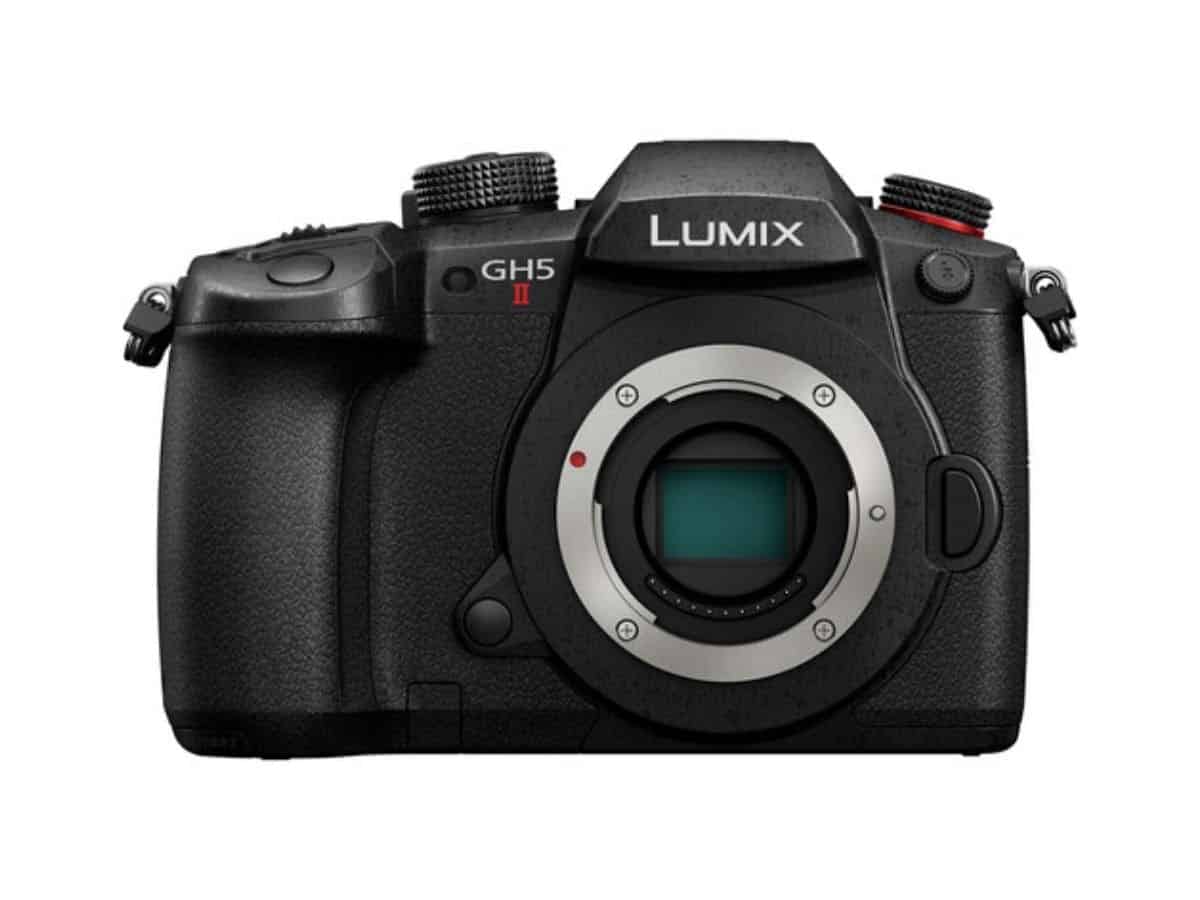
The Panasonic Lumix GH5 II is an updated version of the GH5. The GH5 II features a 20.3 MP sensor with a new AR coating and an evolved Venus Engine Imaging Processor.
The stabilization system also received an update, which can now compensate for 6.5 stops of camera shake.
For video, the GH5 II can record uncropped 4K60 video. Plus, it includes pre-installed V-Log L, making it easier to match color tones.
Overall, the GH5 II offers excellent enhancements, but the autofocus isn’t up to par with other cameras.
| Compare Panasonic Lumix GH5 II (body only) prices |
|---|
| $1,497.99 at B&H |
| $1,497.99 at Adorama |
| $1,497.99 at Amazon |
Pentax cameras with IBIS
While Pentax isn’t competing with Canon and Nikon, it still offers a few excellent DSLR and medium-format cameras.
At this time, Pentax hasn’t released a mirrorless camera. However, several of the DSLR cameras have IBIS. They’re as follows.
Pentax K-1 Mark II
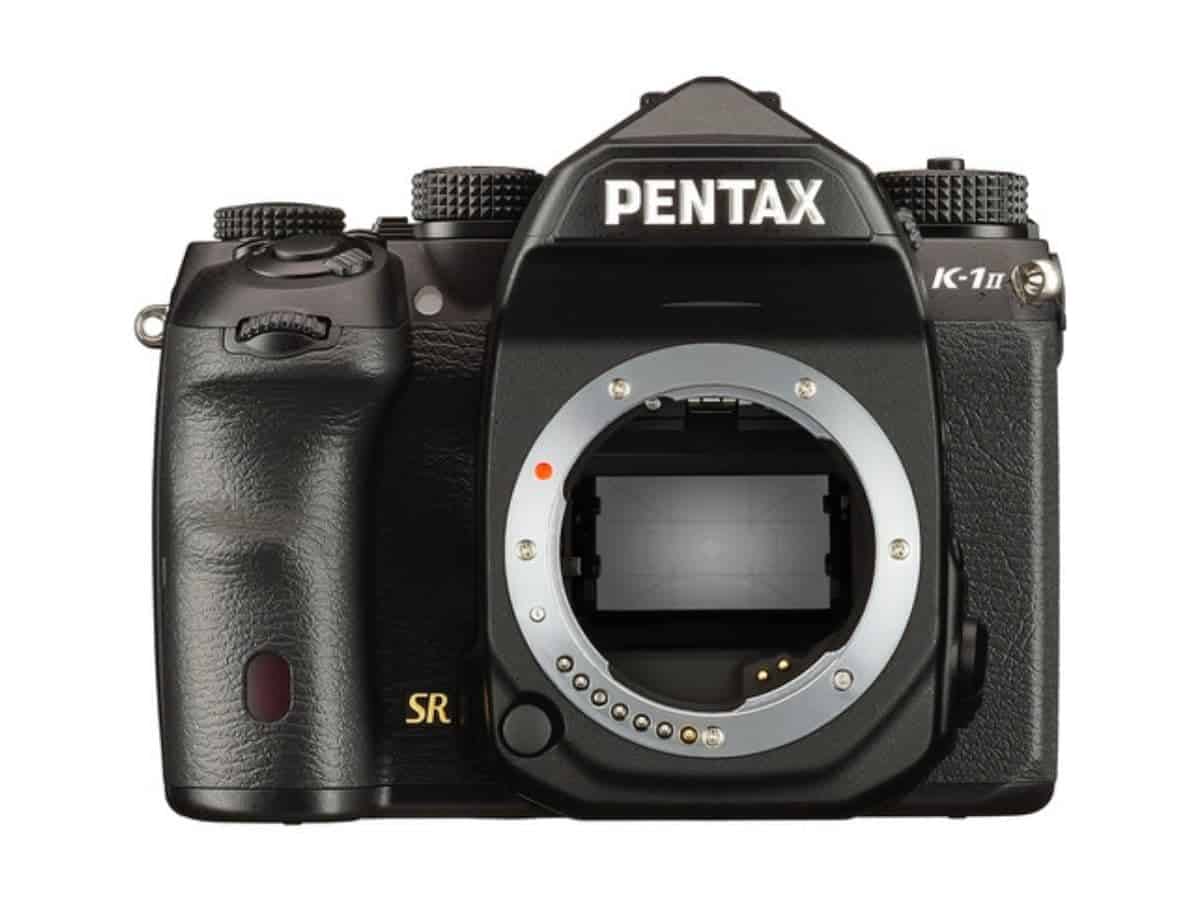
The Pentax K-1 Mark II is the updated version of Pentax’s flagship DSLR. It’s a good DSLR camera due to its 36.4 MP full-frame sensor, being weather-sealed and built incredibly tough.
The K-1 Mark II features a 5-axis Shake Reduction system that counters camera shake by up to 5 stops. It also has a 33-point autofocus system, 25 of them being cross-type.
The main drawback with the autofocus system is that it’s sub-par in low-light conditions. While it’s a good camera for stills, it’s not capable of recording 4K videos.
The K-1 Mark II is also a heavy camera. It has some quirks, but overall, it’s a good camera for photography.
| Compare Pentax K-1 Mark II (body only) prices |
|---|
| $1,999.95 at Ricoh |
| $1,799 at B&H |
| $1,796.95 at Adorama |
| $1,796.95 at Amazon |
| $1,796.95 at Focus Camera |
Pentax K-3 Mark III
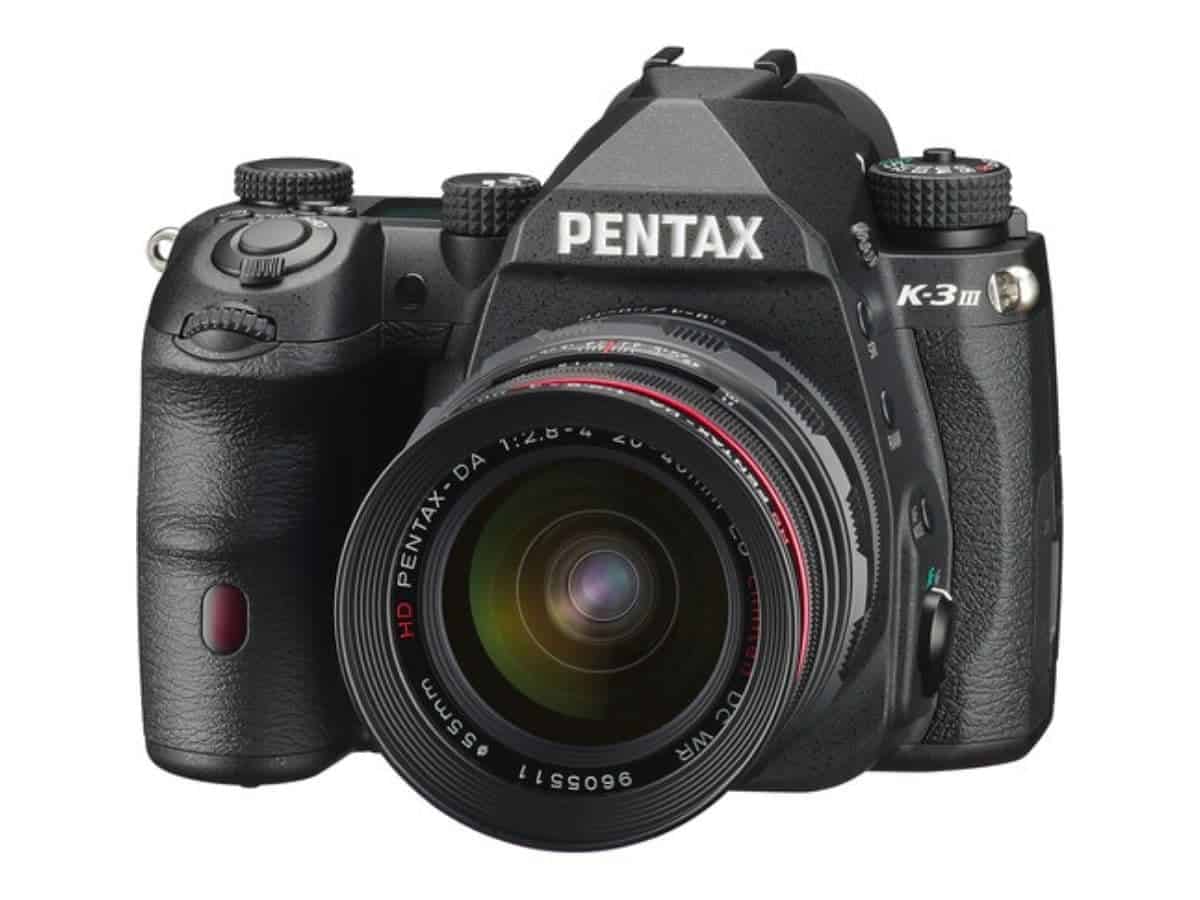
The Pentax K-3 Mark III features its best autofocus system, which has 101 autofocus points.
It has a 25.7 MP APS-C sensor and is the flagship crop-sensor camera among Pentax cameras.
The K-3 Mark III also has a 5-axis IBIS with the SR II Shake Reduction, 4K video recording at 30p, and offers continuous shooting up to 12 fps.
Overall, the K-3 Mark III is pricey for an APS-C DSLR. If you’re already a Pentax user, it’d be worth the upgrade. If you’re not, you can find better cameras elsewhere.
| Compare Pentax K-3 Mark III (body only) prices |
|---|
| $1,999.95 at Ricoh |
| $1,996.95 at B&H |
| $1,996.95 at Amazon |
| $1,996.95 at Adorama |
Pentax K-70
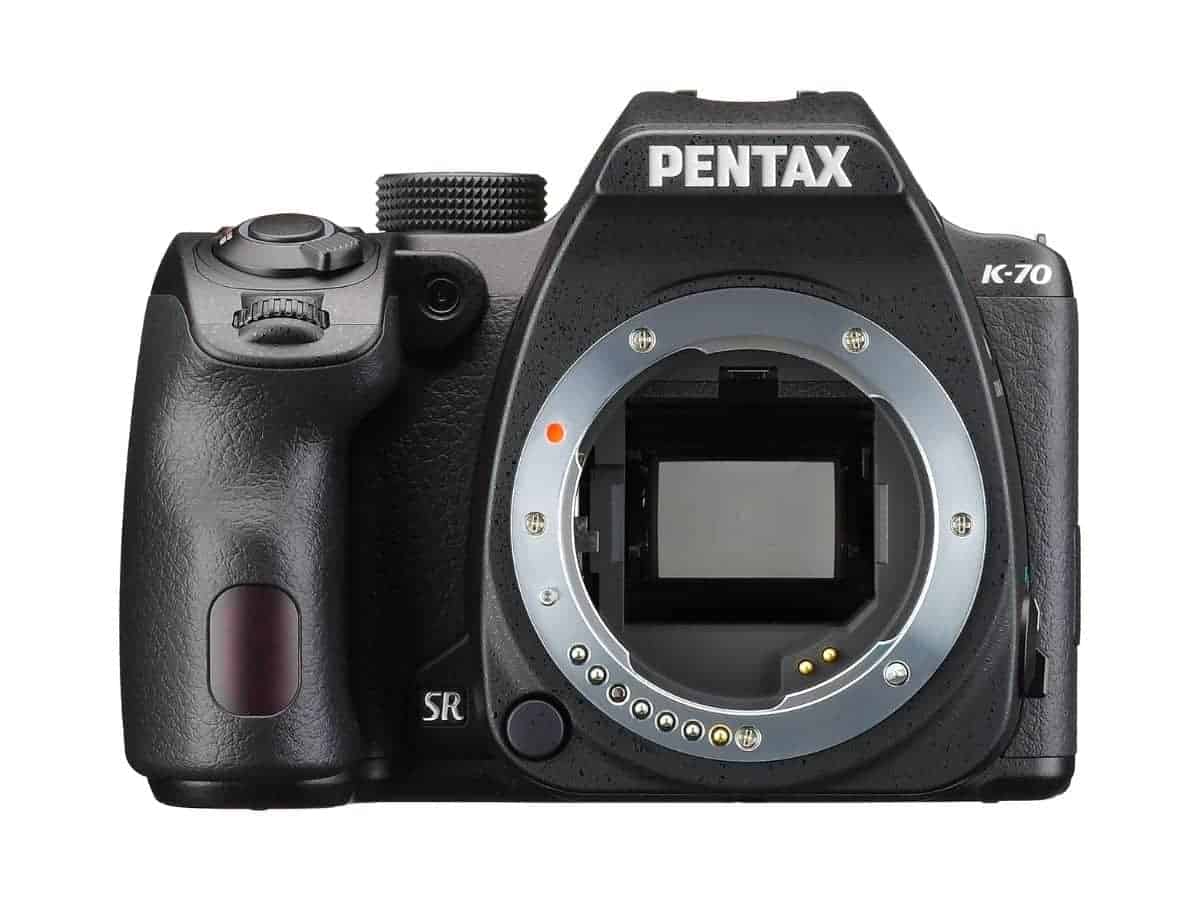
The Pentax K-70 is a great upper entry-level camera. It has a 24.24 MP APS-C CMOS sensor ideal for shooting raw images and in-camera sensor-shift type Shake Reduction.
Like other Pentax cameras, it’s well-built. The weather-sealing and durable build ensure it lasts a long time. However, it also means that it’s pretty heavy.
It also lacks when it comes to autofocus performance and the use of live view, but for being less than $1,000, the K-70 is a great camera.
| Compare Pentax K-70 (body only) prices |
|---|
| $549.95 at Ricoh |
| $546.95 at B&H |
| $546.95 at Adorama |
| $546 at Focus Camera |
| $546.95 at Amazon |
FUJIFILM cameras with IBIS
FUJIFILM is an all-around great camera brand. You can find great mirrorless and medium format cameras.
One of the best aspects of FUJIFILM is the results of JPEG images. The colors and final image are beautiful and, when properly exposed, don’t need editing.
Related article: The best Fujinon lenses for Fujifilm X System cameras
The following are the FUJIFILM cameras with IBIS.
FUJIFILM X-T4
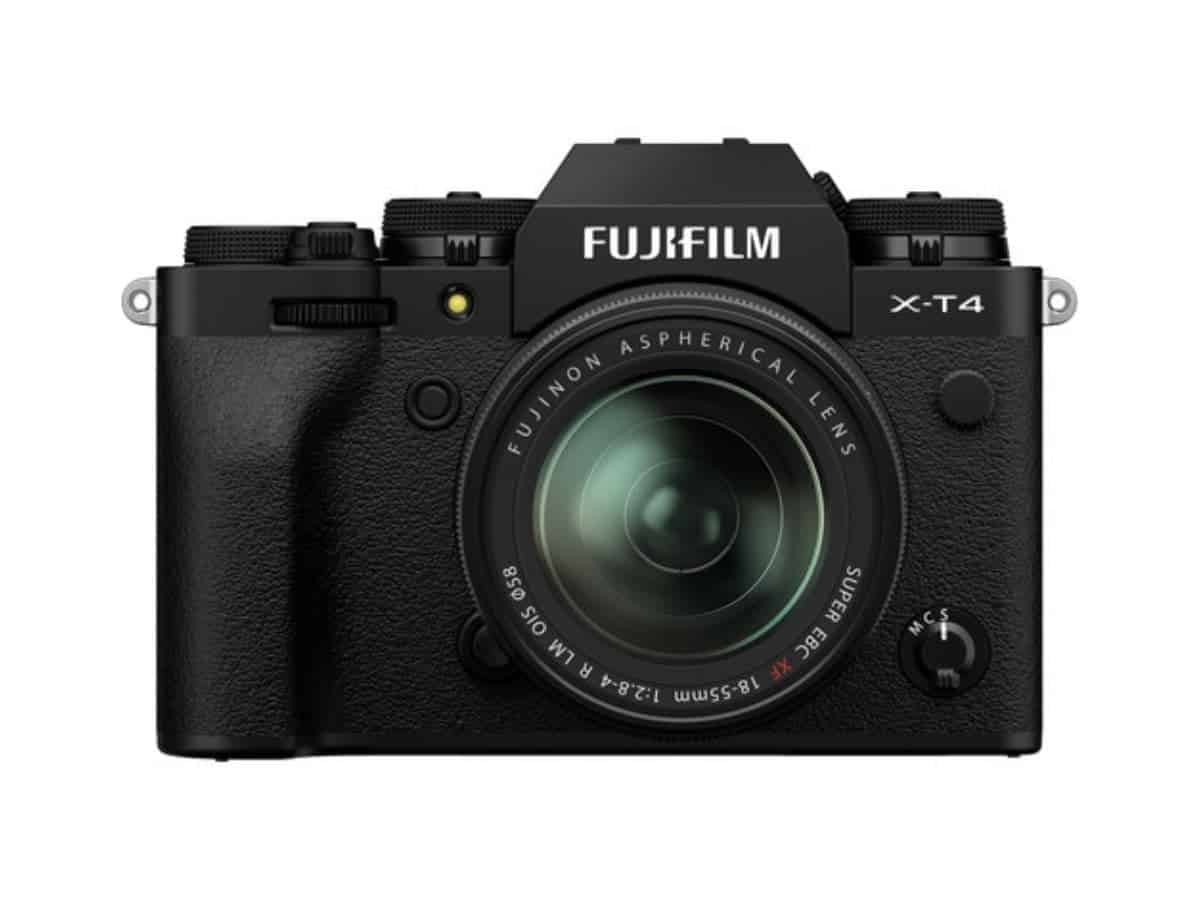
FUJIFILM’s X-T4 is a powerful APS-C camera, as it has a 26.1 MP sensor and an incredible 5-axis in-body image stabilization system.
It also supports 4K video at 60 fps and a fast autofocus system that combines 425 phase-detection points with a contrast-detection system for top-notch autofocus performance.
Photographers of all skill levels rave about the X-T4 because of the IBIS, faster autofocus, improved battery life, and faster continuous shooting speeds.
With the mechanical shutter, it offers up to 15 fps. With the electronic shutter and 26.1 MP resolution, it’s up to 20 fps.
It’s important to note that the autofocus system works best with a subject. If you’re capturing landscape photos, you’ll notice a difference in performance.
Otherwise, if you’re looking for an incredible hybrid camera that captures beautiful colors, the X-T4 is it.
| Compare FUJIFILM X-T4 (body only) prices |
|---|
| $1,499 at B&H |
| $1,499 at Adorama |
| $1,499 at Focus Camera |
| $1,499 at Amazon |
FUJIFILM X-S10
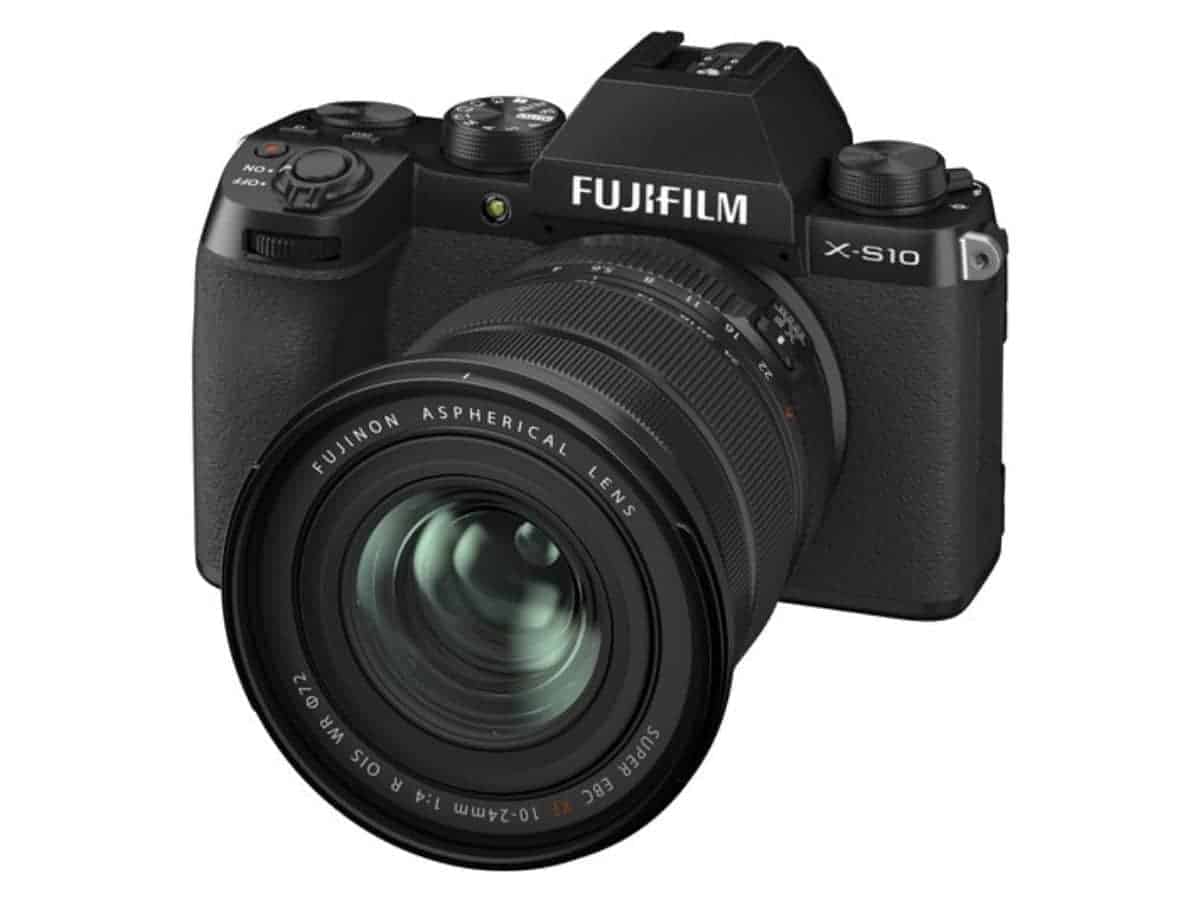
The FUJIFILM X-S10 is a mid-range camera with a 26.1MP APS-C X-Trans BSI CMOS 4 Sensor and 5-axis IBIS. It’s a portable and versatile crop-sensor camera capable of excellent performance.
The X-S10 supports 4K video at 30 fps and continuous shooting up to 8 fps with its mechanical shutter.
There are two main drawbacks. First, it doesn’t have weather-sealing, and second, it only has one memory card slot.
Despite the two drawbacks, the X-S10 is a solid camera and offers a lot of value for around $999.
| Compare FUJIFILM X-S10 (body only) prices |
|---|
| $999 at B&H |
| $999 at Amazon |
| $999 at Adorama |
| $999 at Focus Camera |
FUJIFILM GFX 100S
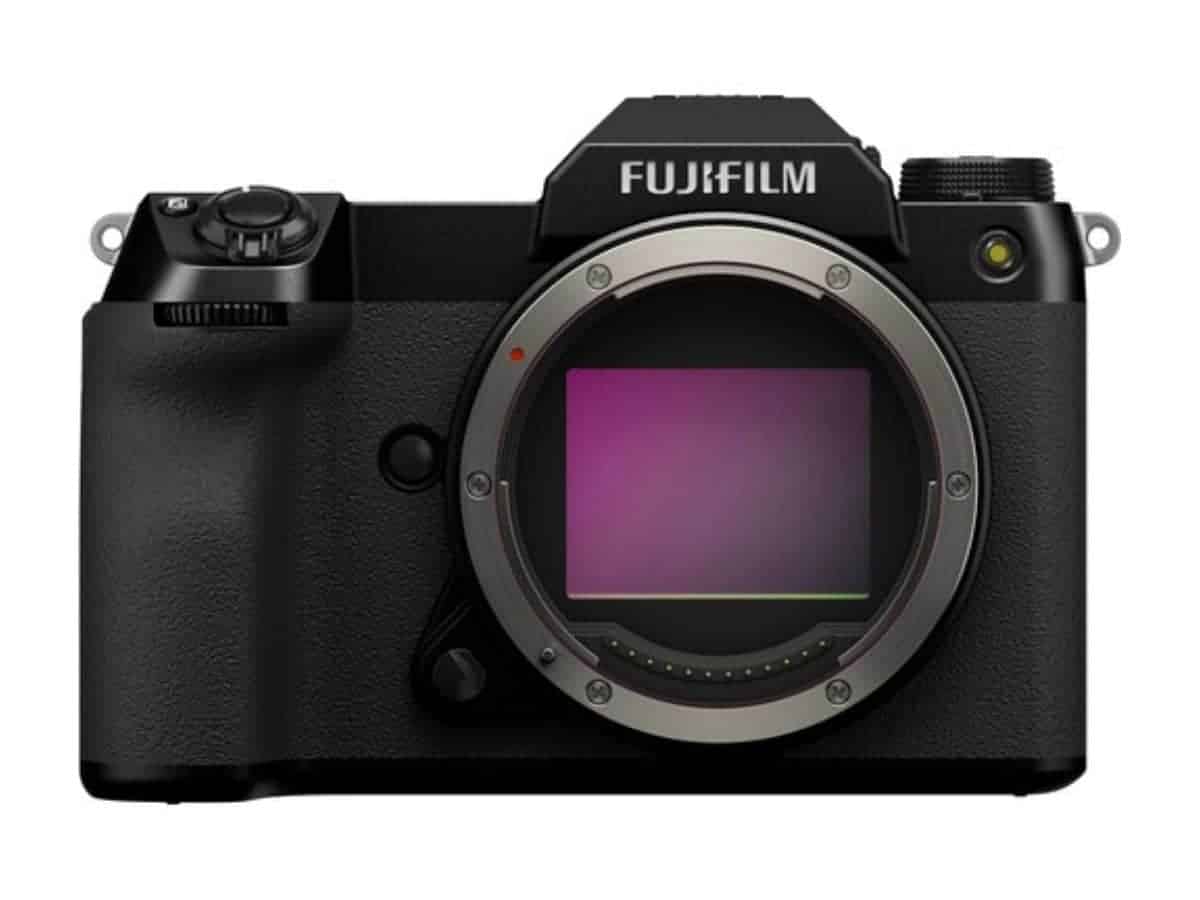
The FUJIFILM GFX 100S is a 102 MP medium format camera that handles like no other.
The ultra-high-resolution back-illuminated CMOS sensor is combined with an X-Processor 4 quad-core CPU to capture images of incredible quality.
It also features built-in 5-axis sensor-shift image stabilization for better handheld shooting. Additionally, the GFX 100S captures professional-level 4K30 video.
It does have a few shortcomings. The autofocus isn’t as good as you’d expect, and the shoot speeds are pretty slow.
If you can overcome its drawbacks, the top-notch handling and image quality is worth it.
For under $10,000, you’re not going to find a better camera.
| Compare FUJIFILM GFX 100S (body only) prices |
|---|
| $5,999 at B&H |
| $5,999 at Adorama |
| $5,999 at Moment |
FUJIFILM GFX 50S II
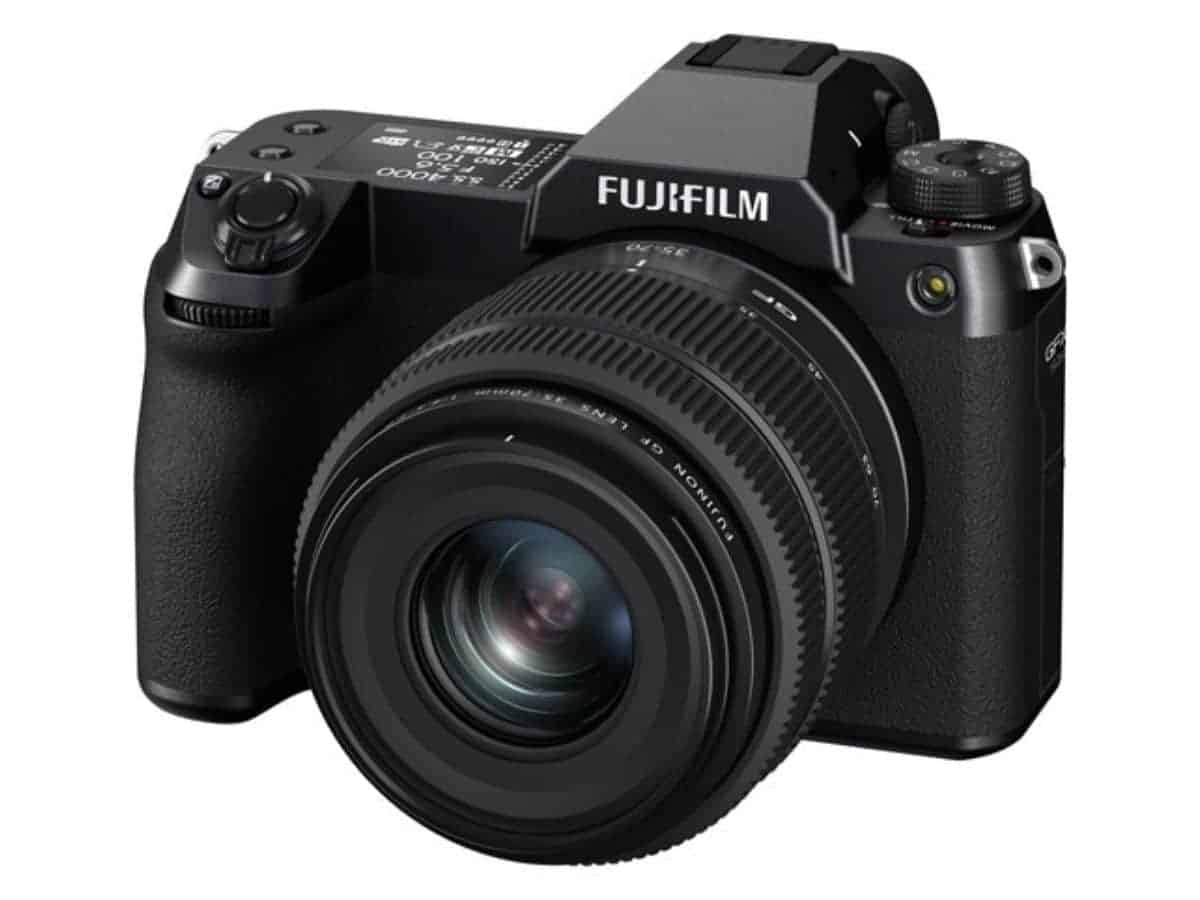
FUJIFILM’s GFX 50S II is a medium format camera with a 51.4MP CMOS sensor and an improved X-Processor 4 image processor.
It also features an in-body image stabilization system, providing up to 6.5 stops of five-axis stabilization.
Where the GFX 50S II comes short is that it doesn’t offer 4K video recording and its autofocus is a bit slow.
If those two aren’t that important to you, you’ll love the GFX 50S II due to its astonishing image quality.
| Compare FUJIFILM GFX 50S II (body only) prices |
|---|
| $3,999 at B&H |
| $3,999 at Adorama |
| $3,999 at Amazon |
FUJIFILM GFX 100
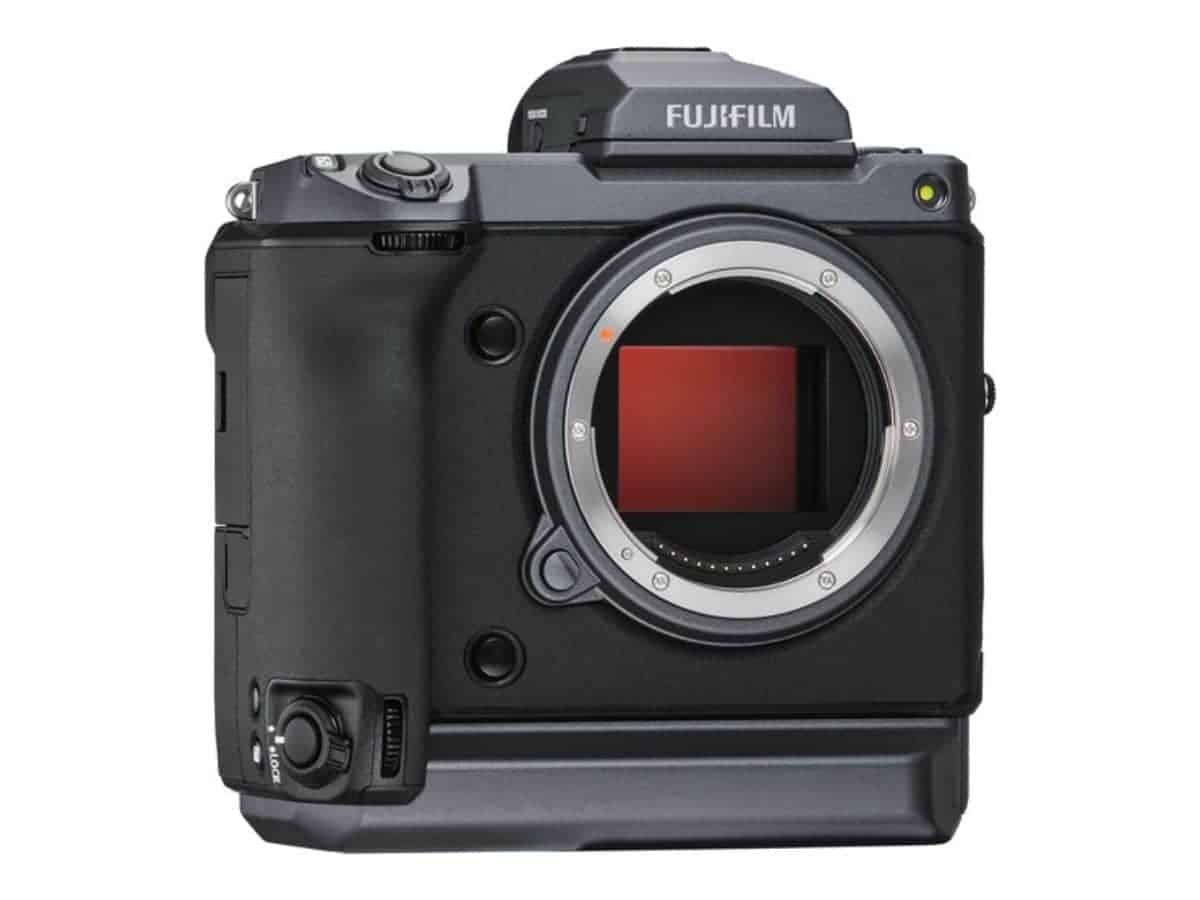
The FUJIFILM GFX 100 is a heavy and big 102 MP medium format camera that produces impeccable image quality.
It has a 5-axis IBIS system, X-Processor 4 and 4K video is possible with 4:2:0 10-bit HDMI output.
The GFX 100 is an expensive camera that’s geared towards professionals who want the highest level of image quality.
The dynamic range and high ISO performance are also through the roof.
| Compare FUJIFILM GFX 100 (body only) prices |
|---|
| $9,999 at B&H |
| $9,999 at Adorama |
| $9,999 at Amazon |
| $9,999 at Moment |
| $9,999 at Focus Camera |
Olympus cameras with IBIS
Olympus is known for compact and lightweight cameras with well-performing in-body image stabilization.
Another reason Olympus is popular is due to the Micro Four Thirds system, which was created with Panasonic.
The following are Olympus cameras with IBIS.
Olympus OM-D E-M1X
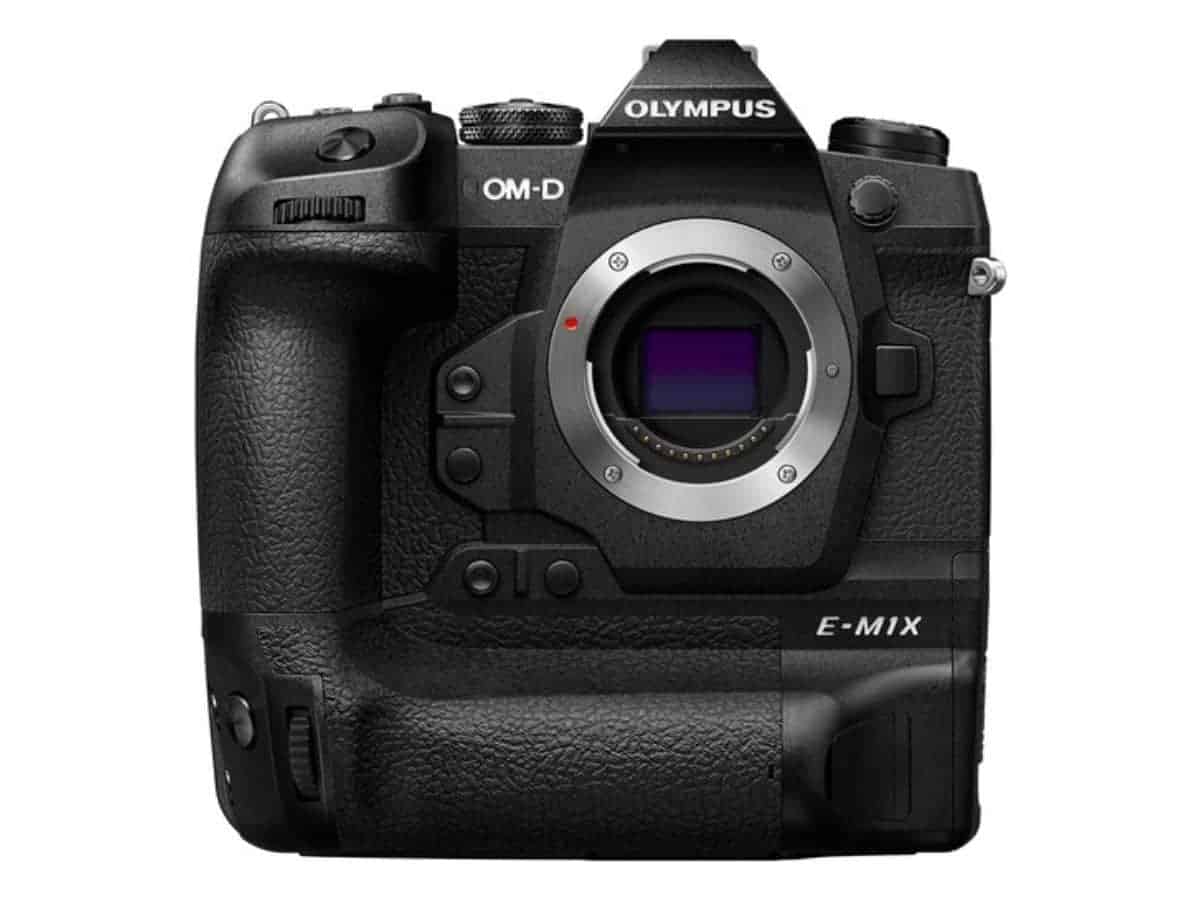
The Olympus OM-D E-M1X is a 20.4 MP Micro Four Thirds camera geared towards professionals. It’s bigger and pricier than what you’d expect, but it’s a great camera. T
he E-M1X has a dual-grip design, and it can shoot 60 fps with an electronic shutter and 15 fps with a mechanical shutter. It also has 5-axis IBIS and supports 4K video.
While there are other cameras with larger sensors, the E-M1X shines because of its performance. When you’re using burst shooting, there’s barely any lag or loss of resolution.
With the E-M1X, Olympus proves that a Micro Four Thirds is still relevant.
| Compare Olympus OM-D E-M1X (body only) prices |
|---|
| $1,699 at B&H |
| $1,699 at Adorama |
| $1,699 at Amazon |
Olympus OM-D E-M1 Mark II
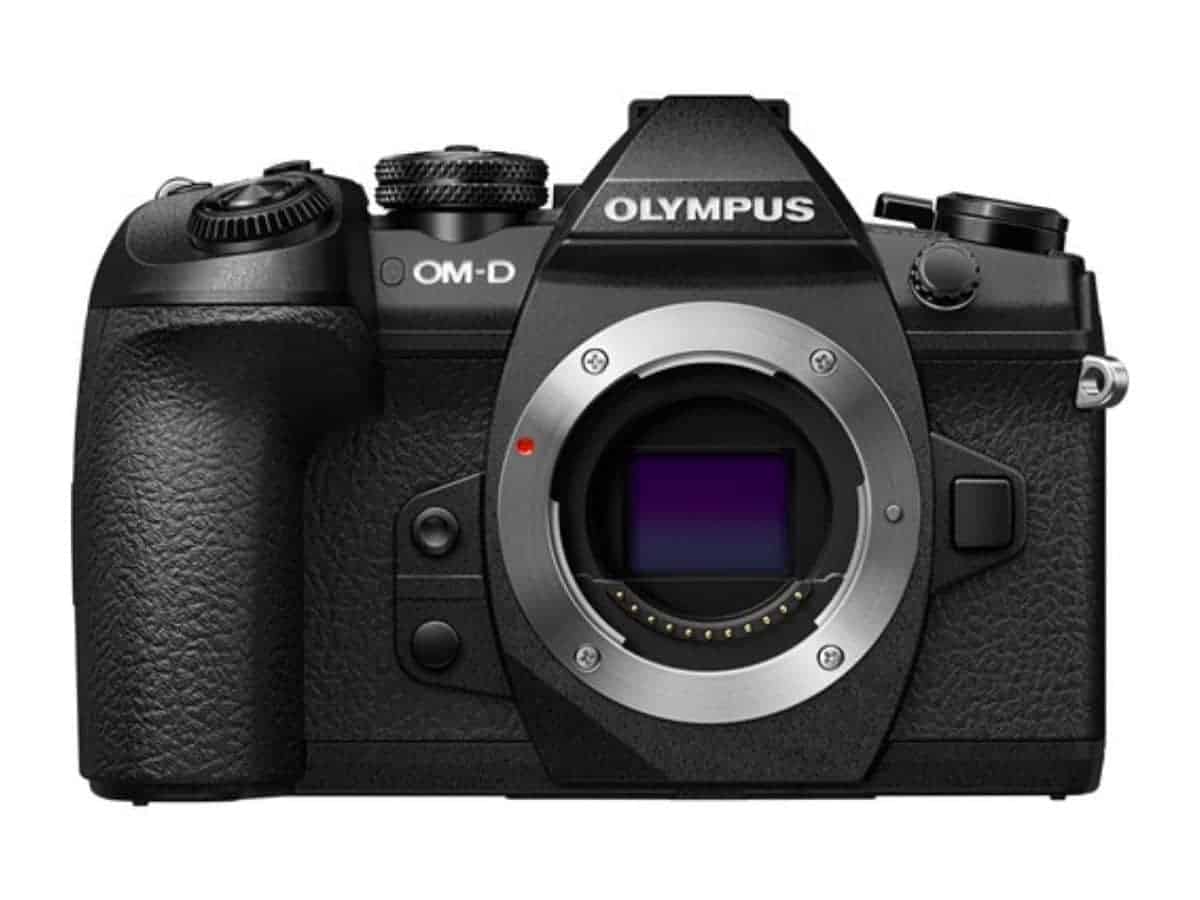
While Olympus has a Mark III version, the E-M1 Mark II is still a pretty good camera.
It has a 20.4 MP sensor, 5-axis IBIS, 60 fps continuous shooting rate with an electronic shutter, and supports 4K video.
The E-M1 Mark II also has a 121-point autofocus system that works well. It costs less than $1,000 now that there’s a third version.
| Compare Olympus OM-D E-M1 Mark II (body only) prices |
|---|
| $949 at B&H |
| $678 at Amazon |
Olympus OM-D E-M1 Mark III
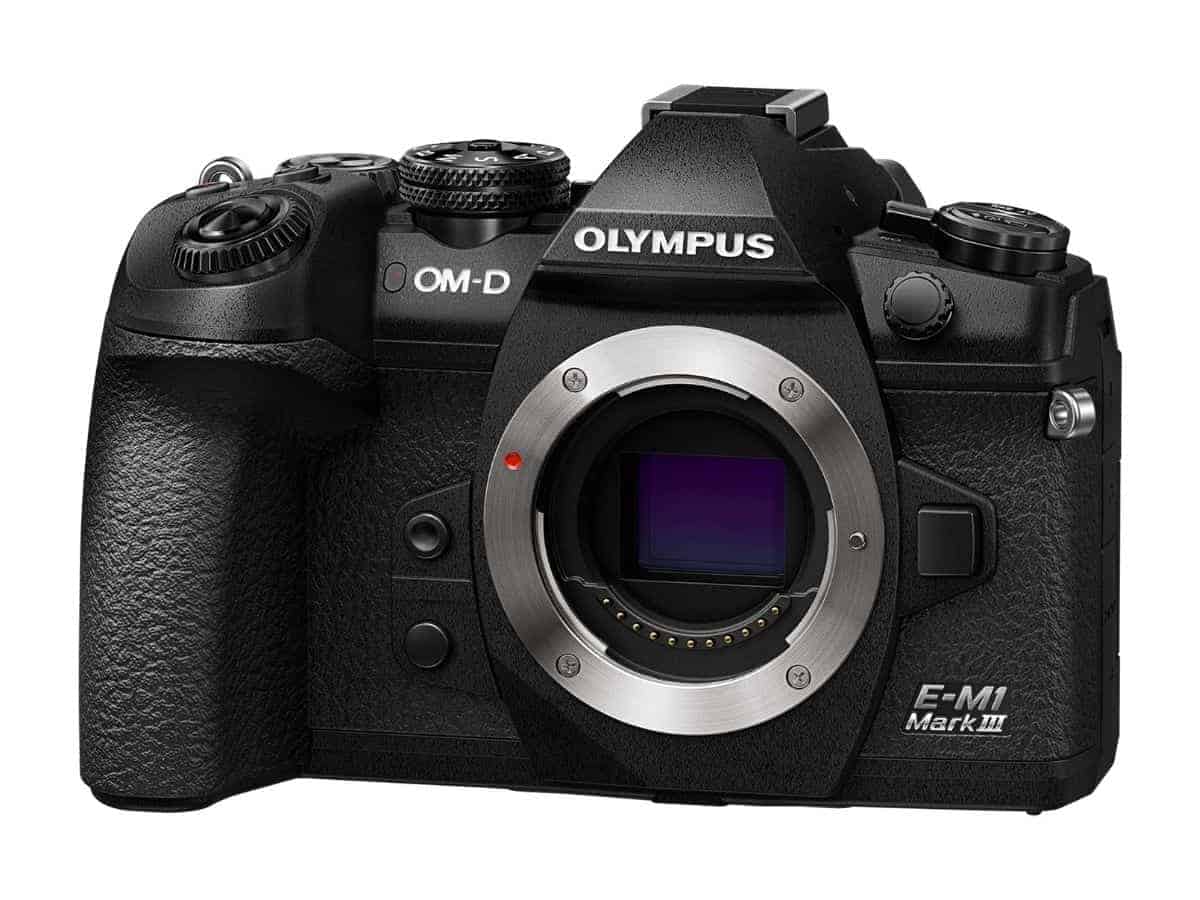
The Olympus OM-D E-M1 Mark III is a small and lightweight camera that produces good image quality.
It has a 20.4 MP Micro Four Thirds sensor, 5-axis IBIS, 4K video, and continuous shooting up to 60 fps with an electronic shutter and 15 fps with a mechanical shutter.
Compared to the E-M1 Mark II, it has better autofocus and video capabilities.
The E-M1 Mark III is a good option with plenty of great features. It’s well-built and has a portable size, but it does come at the cost of incredible image quality.
| Compare Olympus OM-D E-M1 Mark III (body only) prices |
|---|
| $1,499.99 at Olympus |
| $1,499 at B&H |
| $1,499 at Amazon |
| $1,499 at Adorama |
Olympus OM-D E-M5 Mark III
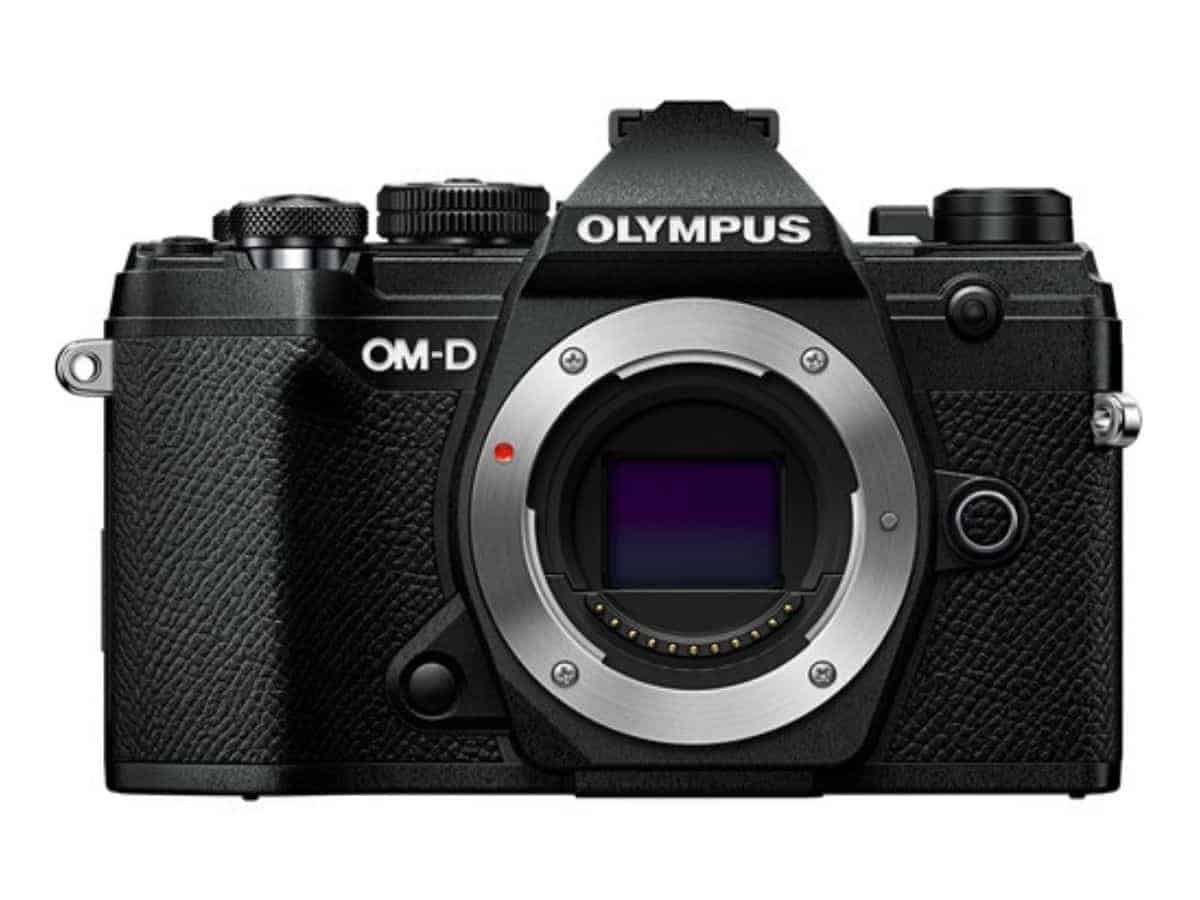
Olympus’ OM-D E-M5 Mark III offers a lot to like for less than $1,000. It has a 20.4 MP Micro Four Thirds sensor, continuous shooting up to 10 fps, 5-axis IBIS, 4K video, and a 121-point autofocus system.
The small size makes it easy to carry for travel, and it has a rugged weather-sealed design.
If you already have an E-M5 or E-M5 II and are invested in Micro Four Thirds lenses, the E-M5 Mark III is worth considering.
| Compare Olympus OM-D E-M5 Mark III (body only) prices |
|---|
| $899.99 at Olympus |
| $899 at B&H |
| $899 at Adorama |
| $899 at Amazon |
Olympus OM-D E-M10 Mark IV
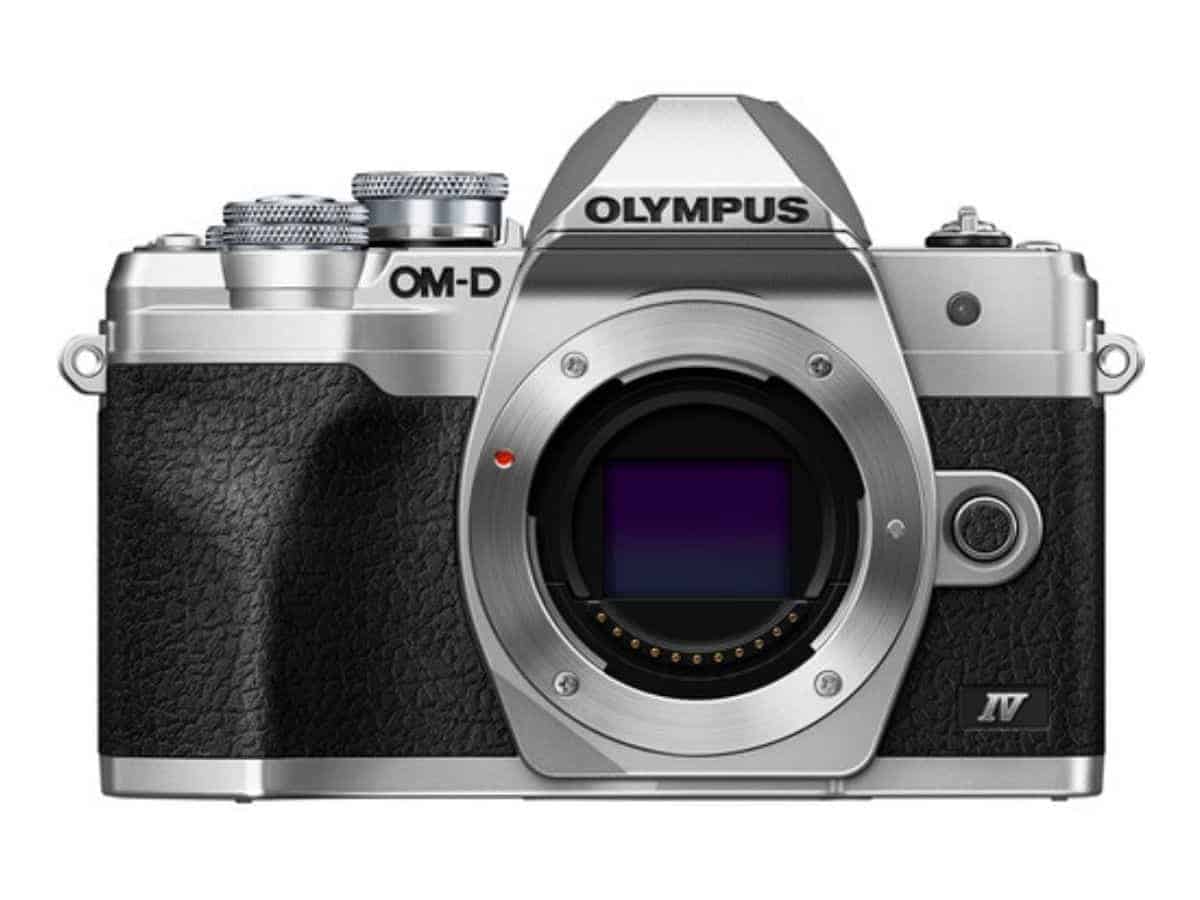
The Olympus OM-D E-M10 Mark IV features a 20.3 MP Micro Four Thirds sensor, 4K30p video recording, 5-axis IBIS, 8.7 fps continuous shooting rate, and a sleek and portable design.
Overall, it’s a good starter camera because it offers good image quality and supports 4K video at less than $1,000.
Plus, you’ll have a lot of lens options due to the Micro Four Thirds system.
| Compare Olympus OM-D E-M10 Mark IV (body only) prices |
|---|
| $599.99 at Olympus |
| $599 at B&H |
| $599 at Adorama |
| $599 at Amazon |
| $599 at Focus Camera |
Olympus PEN E-PL10
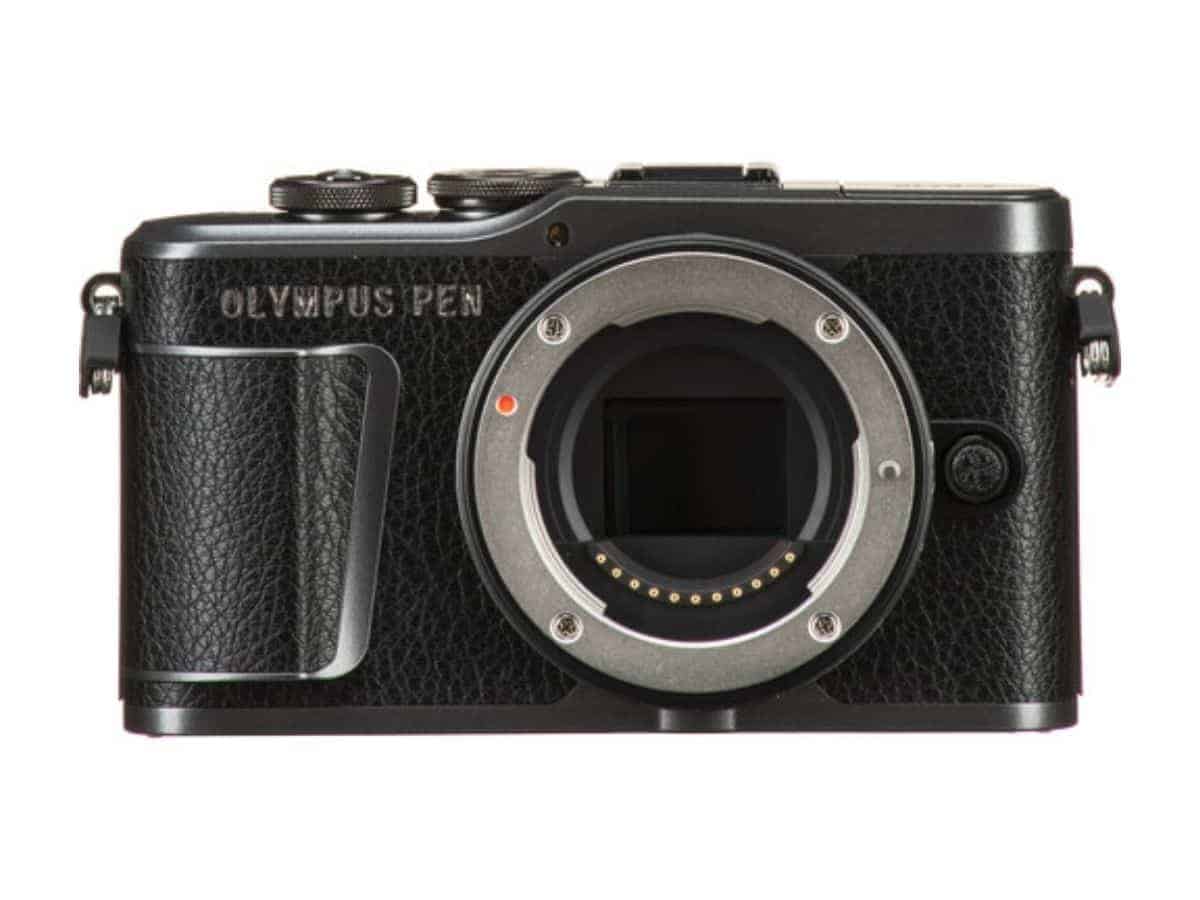
The Olympus PEN E-PL10 is a stylish entry-level mirrorless camera with the Micro Four Thirds lens mount.
It has a 16.1 MP sensor, supports 4K video at 30 fps, and features 3-axis in-body image stabilization. The small size and contoured sides will also feel good in your hand.
However, it’s not the best entry-level camera due to its 16.1 MP sensor, which seems outdated.
| Compare Olympus PEN E-PL10 (body only) prices |
|---|
| $549 at B&H |
| $549 at Adorama |
| $549 at Amazon |
| $549.99 at Focus Camera |
Leica cameras with IBIS
Leica makes top-tier cameras. They’re well-built and have incredible image quality.
If you have the budget, get a Leica camera because of its superior quality and durability. The following are the Leica cameras with IBIS.
Leica SL2
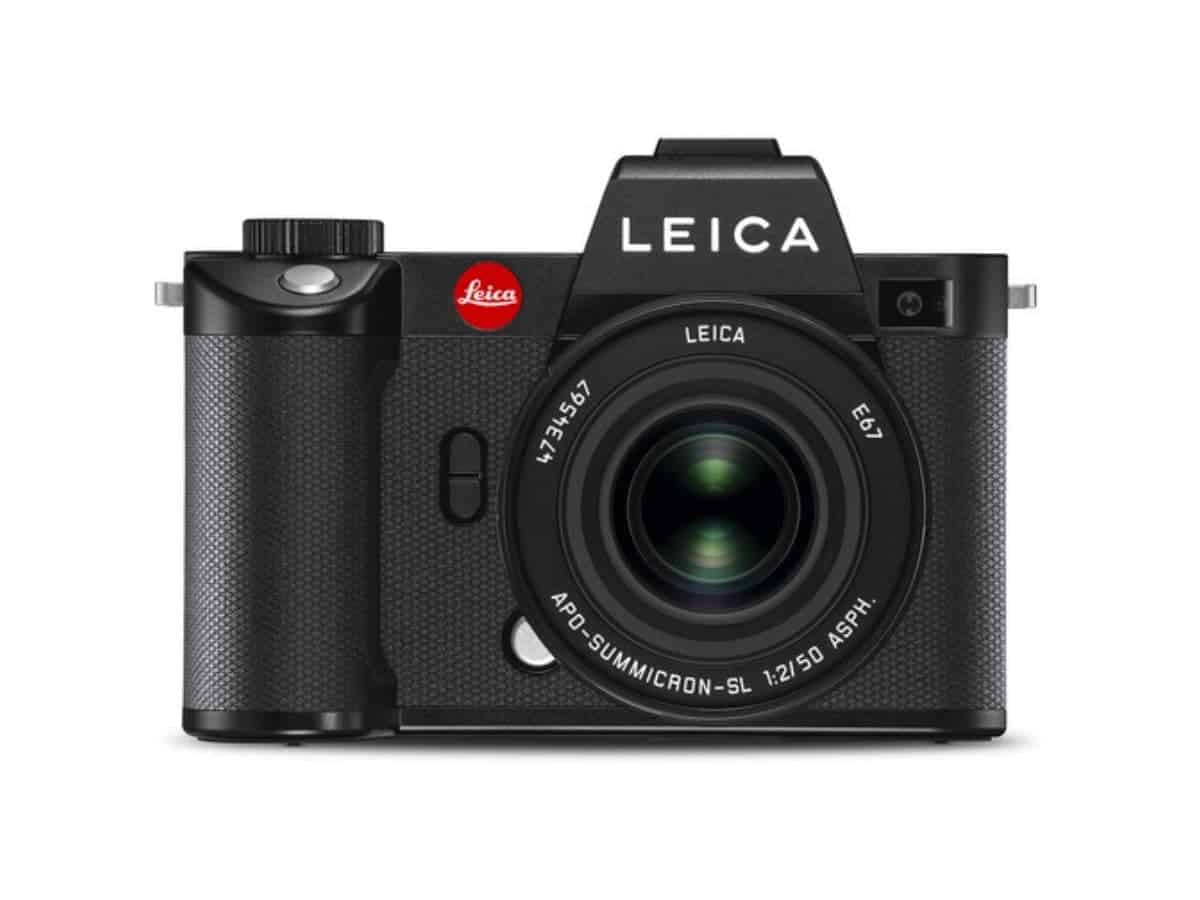
Leica’s SL2 isn’t cheap, but it’s a powerhouse ideal for hybrid shooters. It has a 47.3 MP sensor and a 5-axis IBIS system that works impeccably.
The SL2 offers up to 20 fps continuous shooting with its electronic shutter and 4K recording at 60p.
Its main drawback is that the LCD is fixed so you can’t flip it out. However, the SL2 is an overall top-notch camera with a premium price tag.
| Compare Leica SL2 (body only) prices |
|---|
| $6,895 at Leica |
| $6,895 at B&H |
| $6,895 at Adorama |
| $6,299.98 at Amazon |
Leica SL2-S
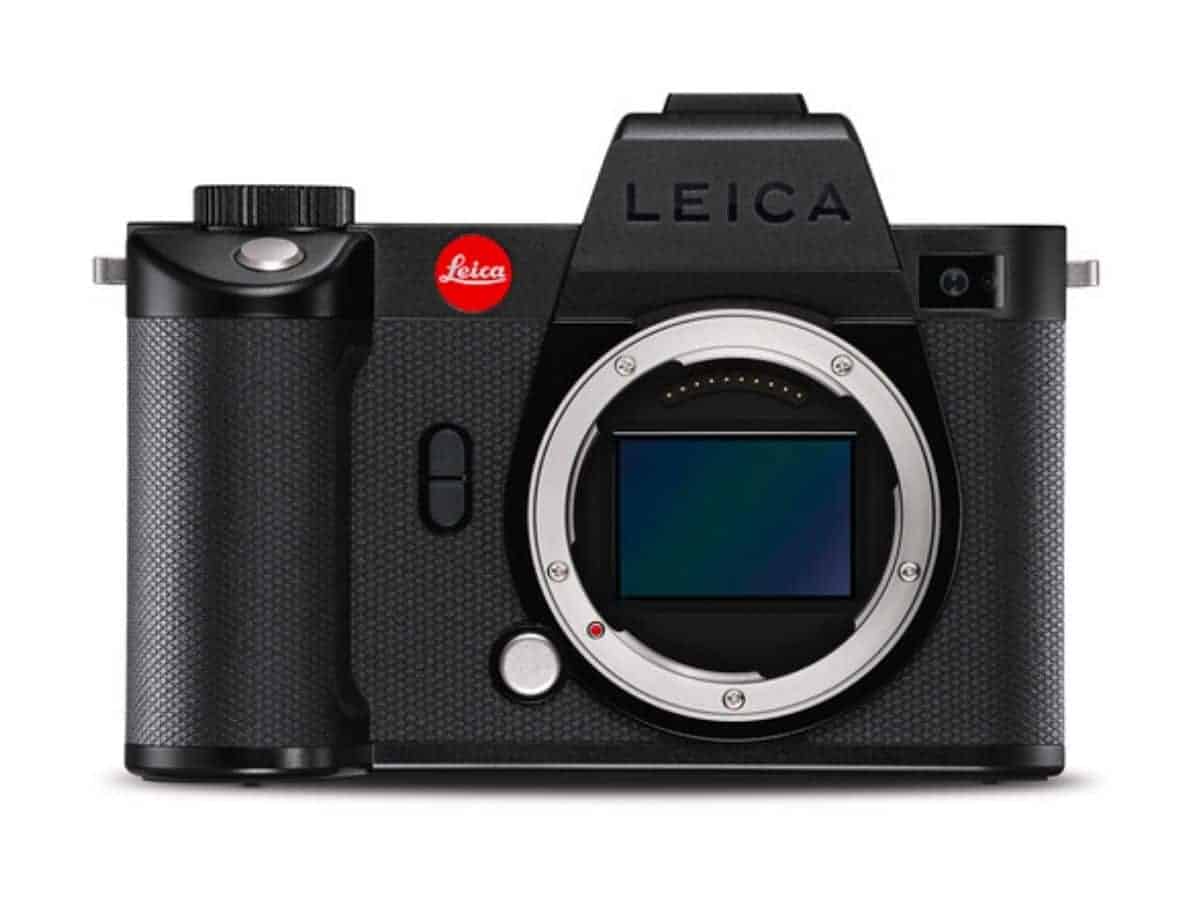
Leica’s SL2-S is a 24 MP full-frame mirrorless camera that features a 5-axis sensor-shift image stabilization system.
While the SL2 is aimed at professionals, the SL2-S is great for photographers of all skill levels and have the budget for it.
The SL2-S has top-tier construction, which makes it durable. It also has one of the best electronic viewfinders on the market.
| Compare Leica SL2-S (body only) prices |
|---|
| $4,995 at Leica |
| $4,995 at B&H |
| $4,975.04 at Amazon |
| $4,995 at Adorama |
Leica TL2
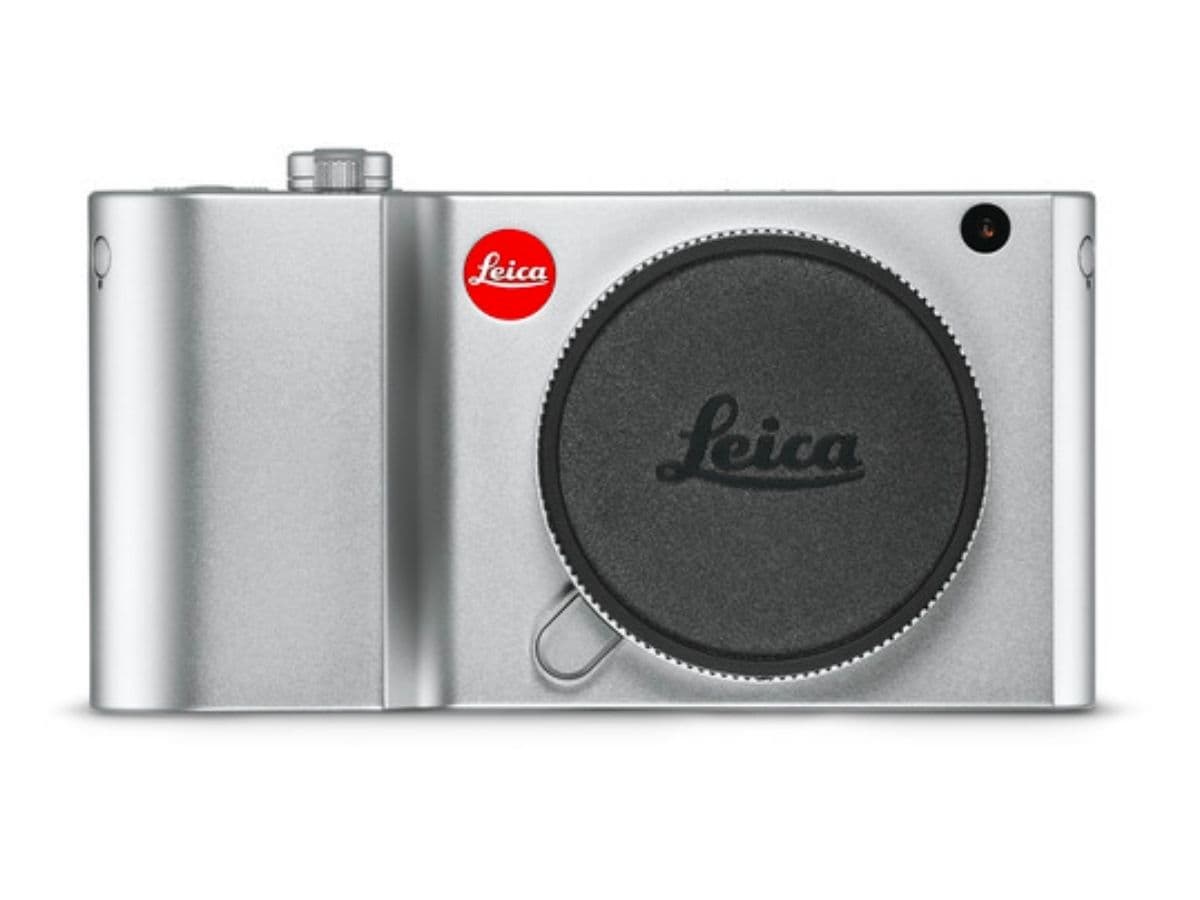
The Leica TL2 is a small but powerful mirrorless camera. It has a 24.2 MP APS-C sensor and a 5-axis IBIS, which is crucial for its small size being susceptible to camera shake.
The TL2 is capable of recording 4K videos at 30 fps and a continuous shooting speed of up to 20 fps using its electronic shutter.
Overall, Leica’s TL2 is a great everyday camera due to its stylish and durable design and small size.
| Compare Leica TL2 (body only) prices |
|---|
| $2,495 at B&H |
| $2,595 at Adorama |
Conclusion
In-body image stabilization is a powerful and helpful feature. You can use slower shutter speeds to an extent to capture blur-free images.
When you combine IBIS and lenses with image stabilization, you get slightly better results. Although, it’s a bit redundant to have both.
Overall, IBIS cameras are excellent and worth the investment.
Featured image courtesy of Unsplash.
